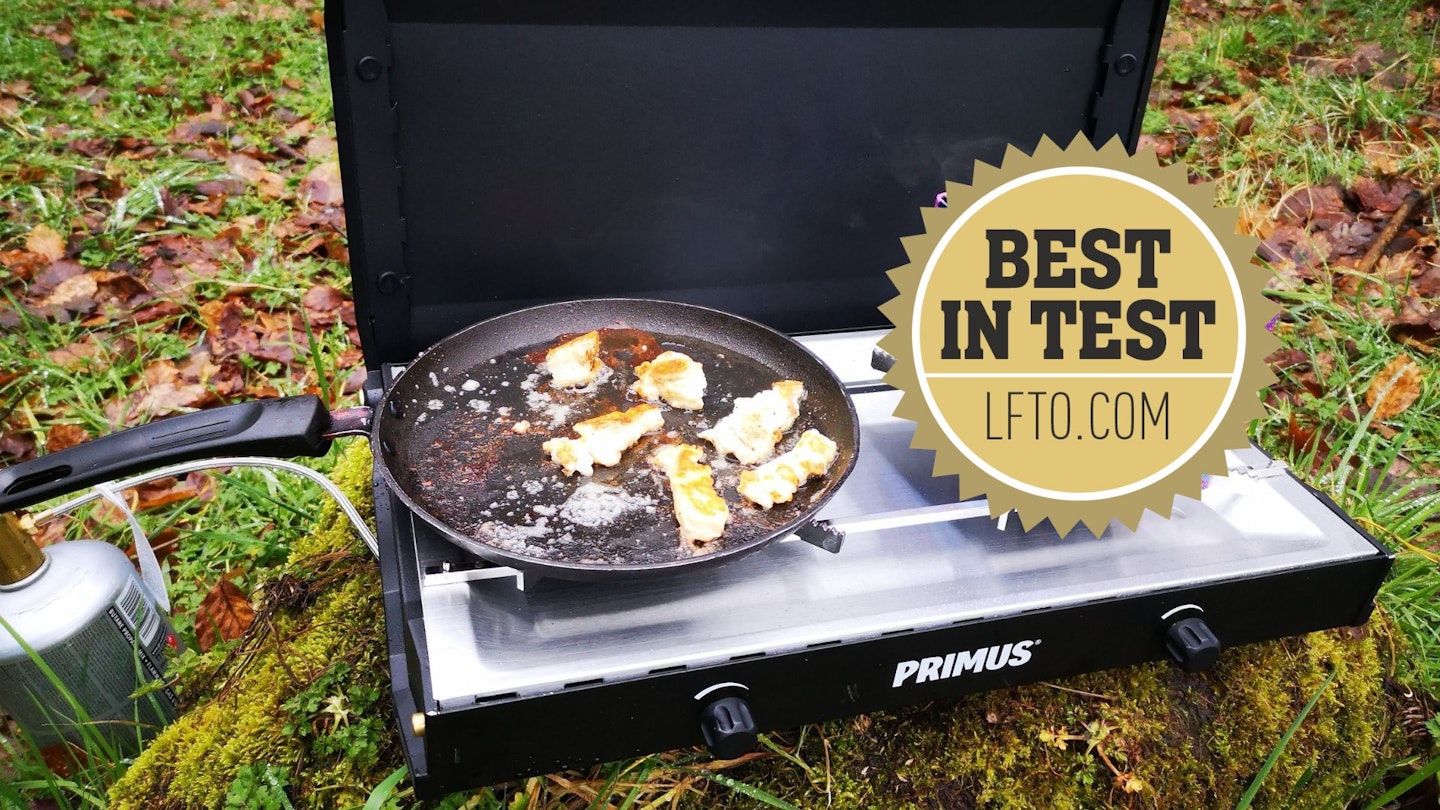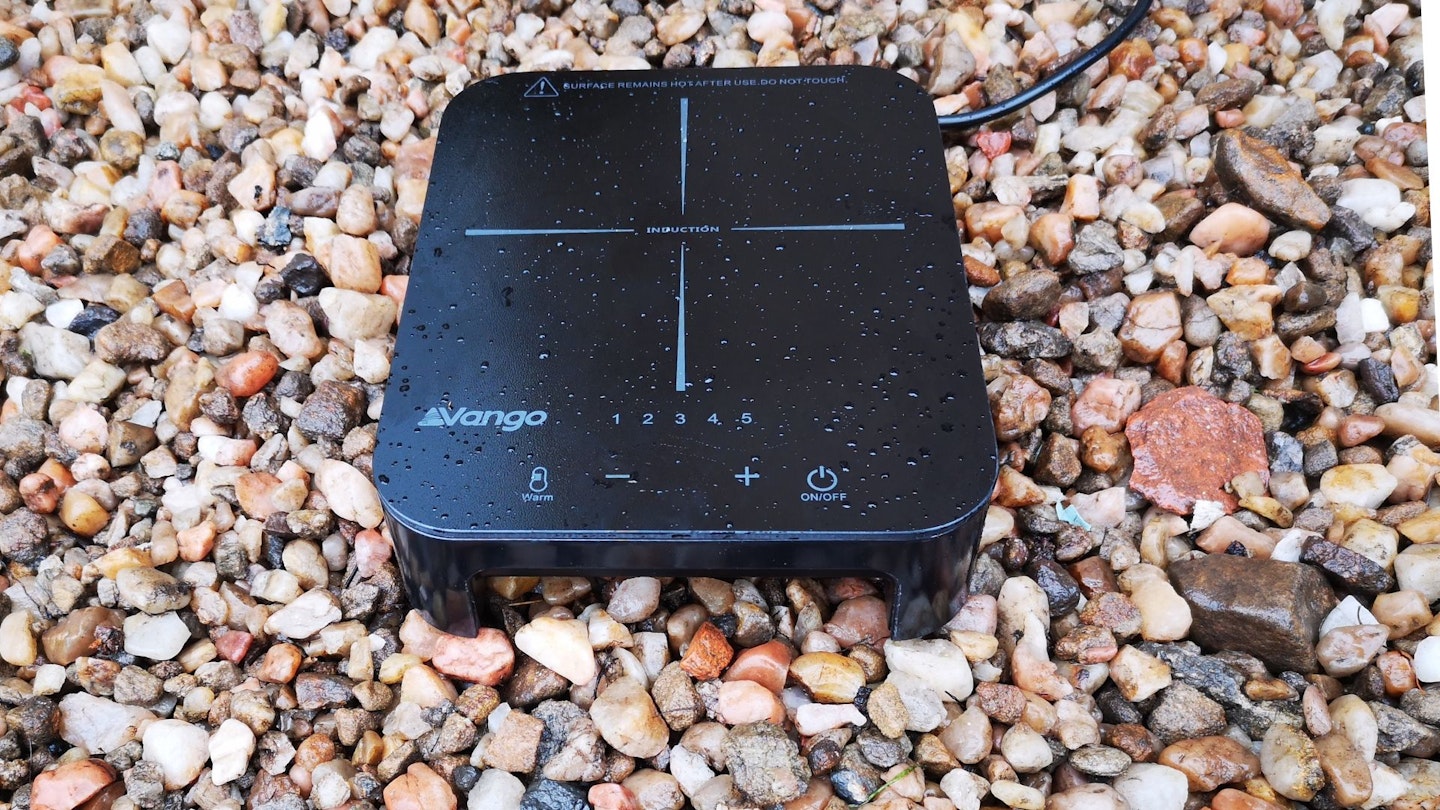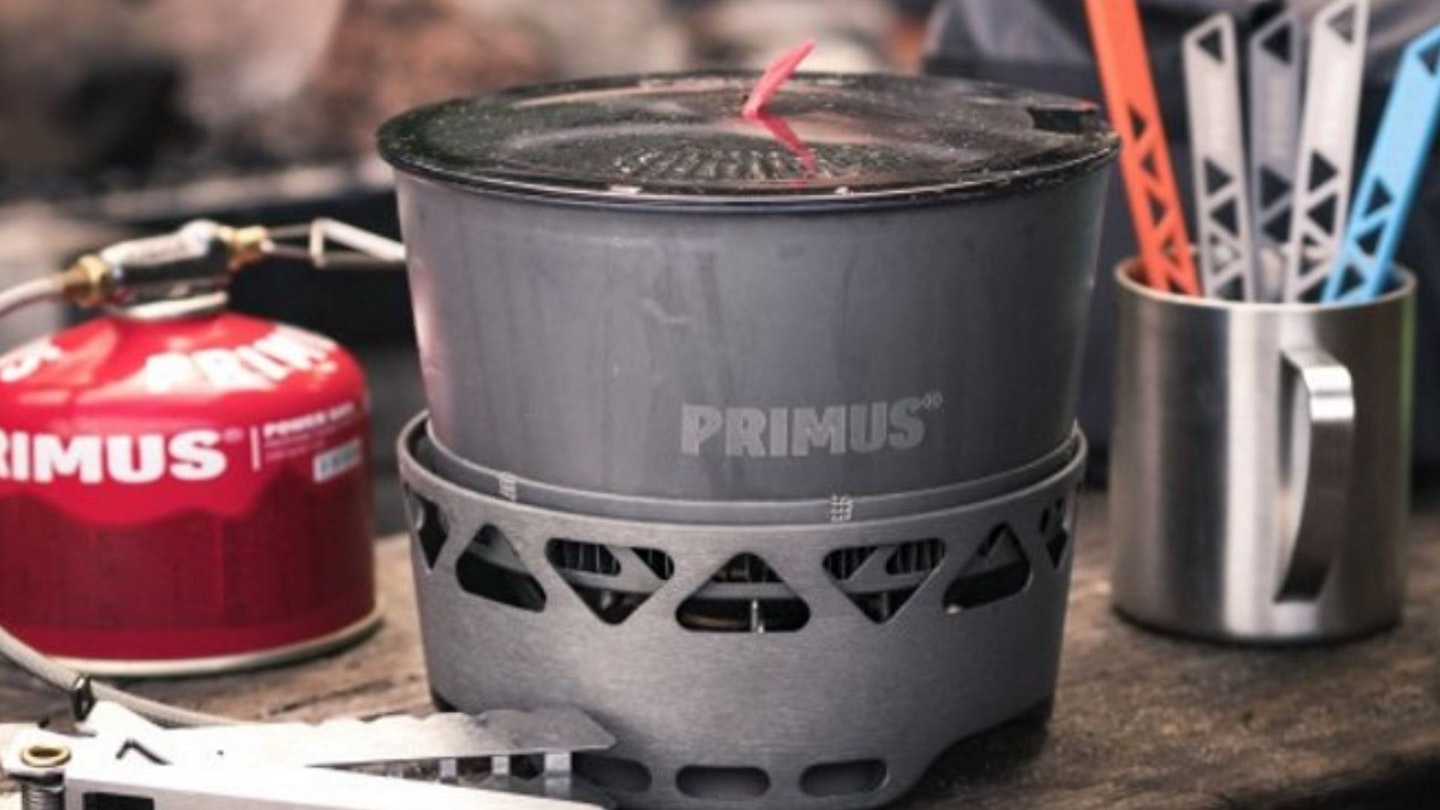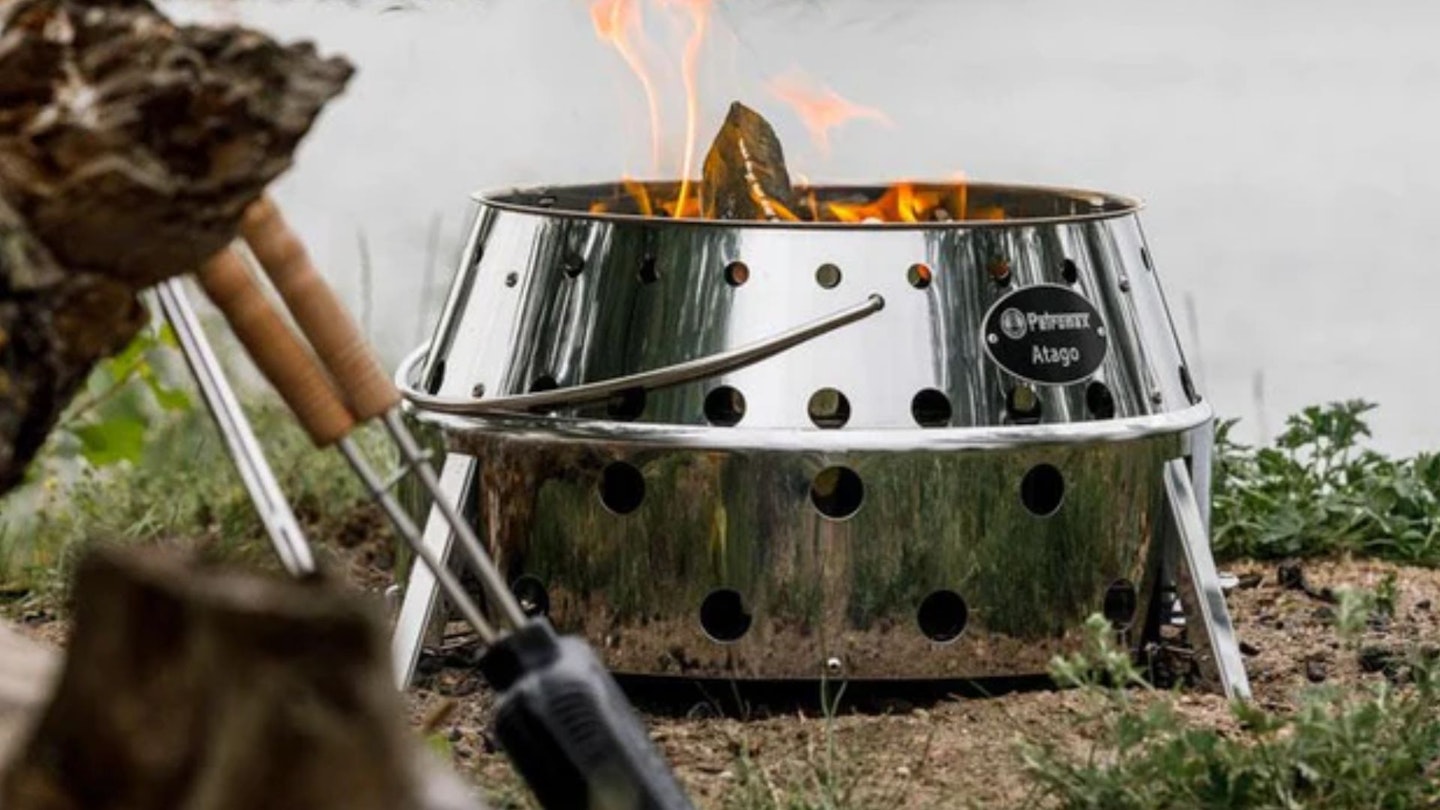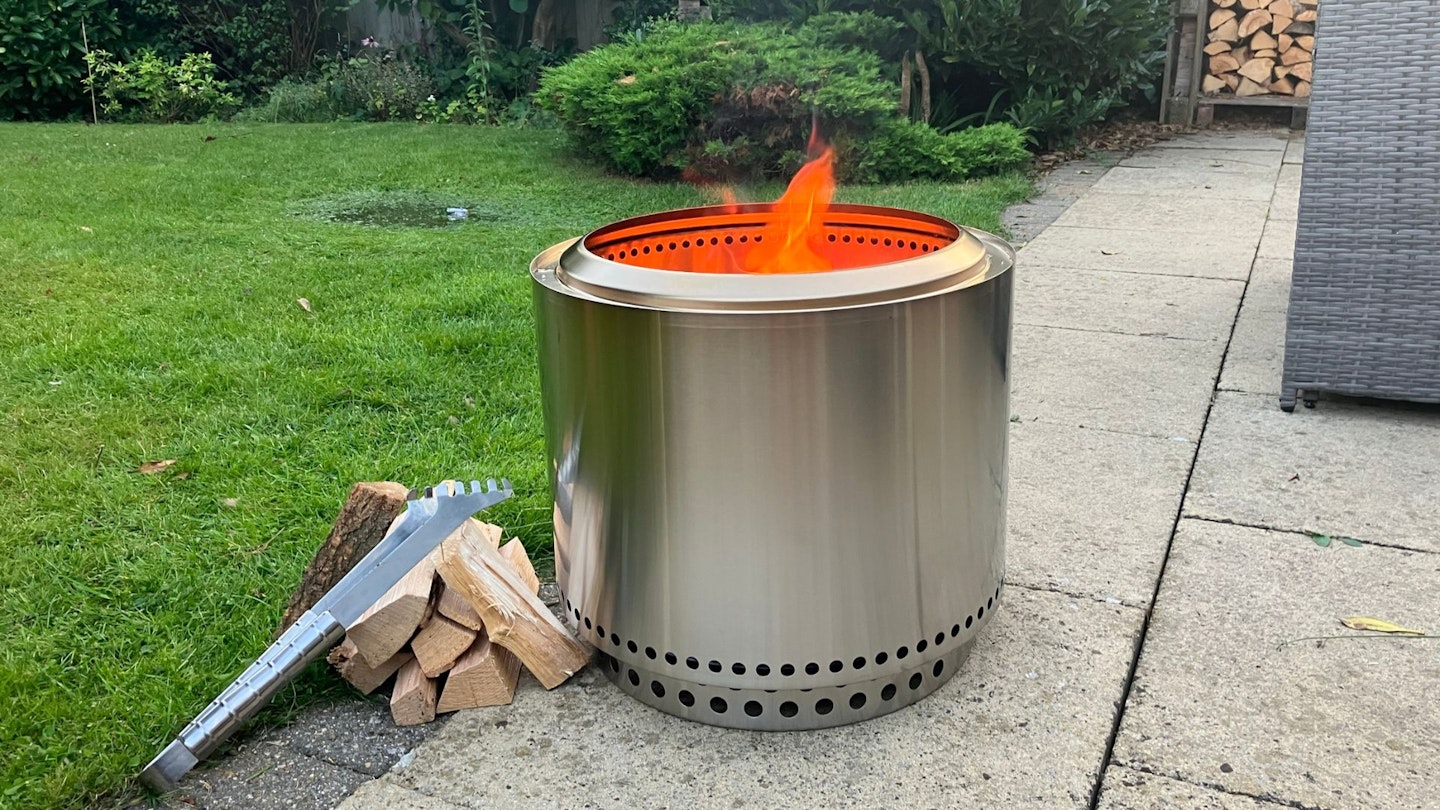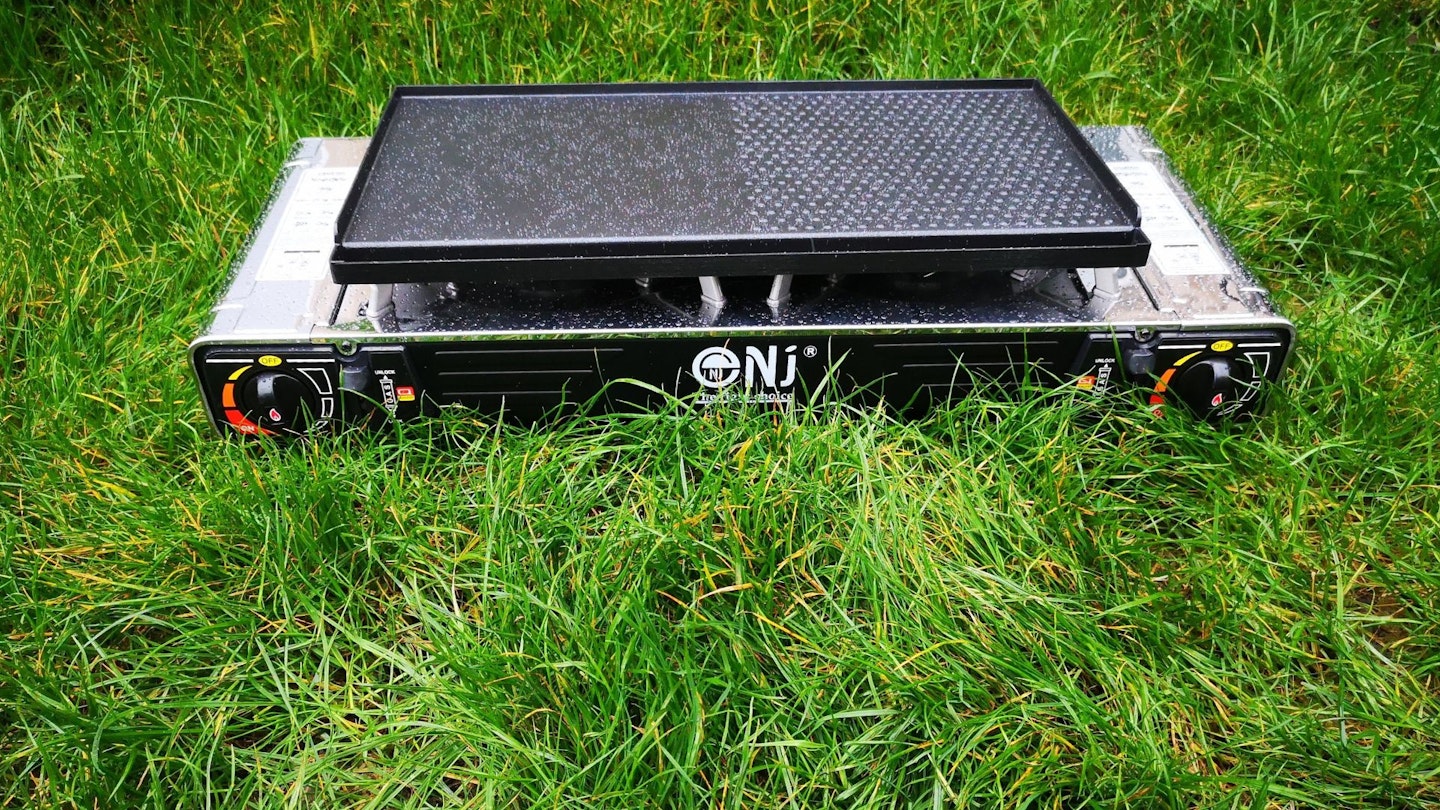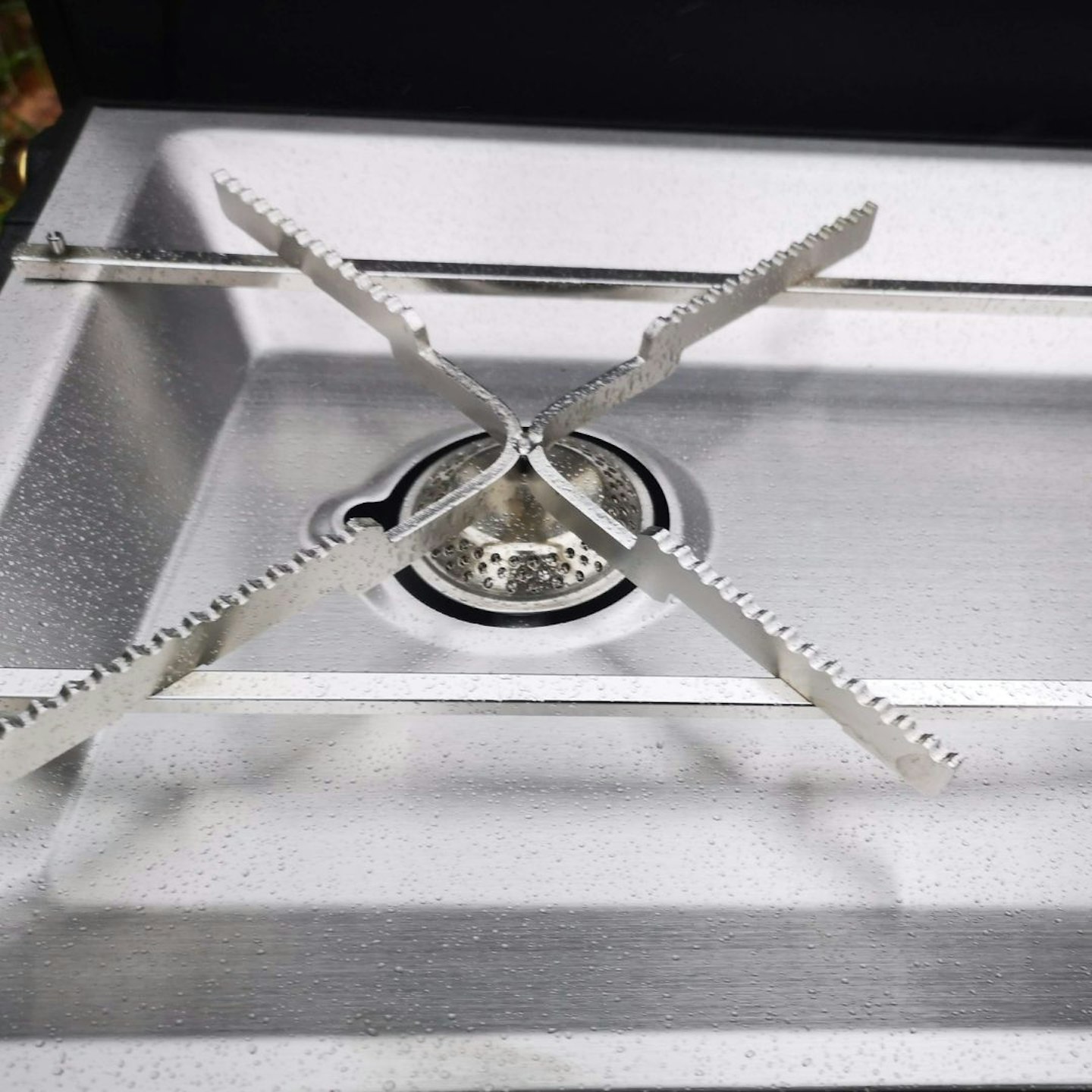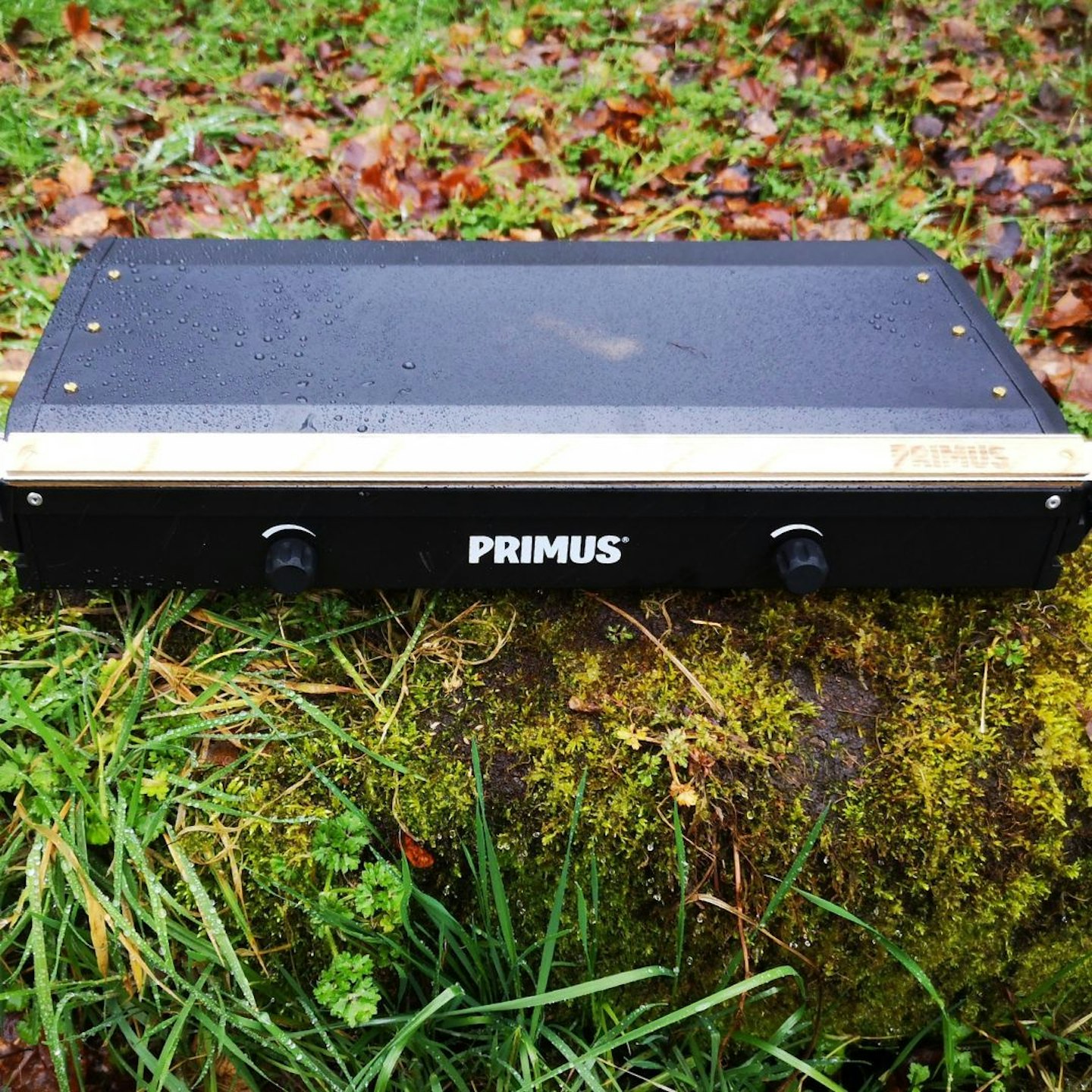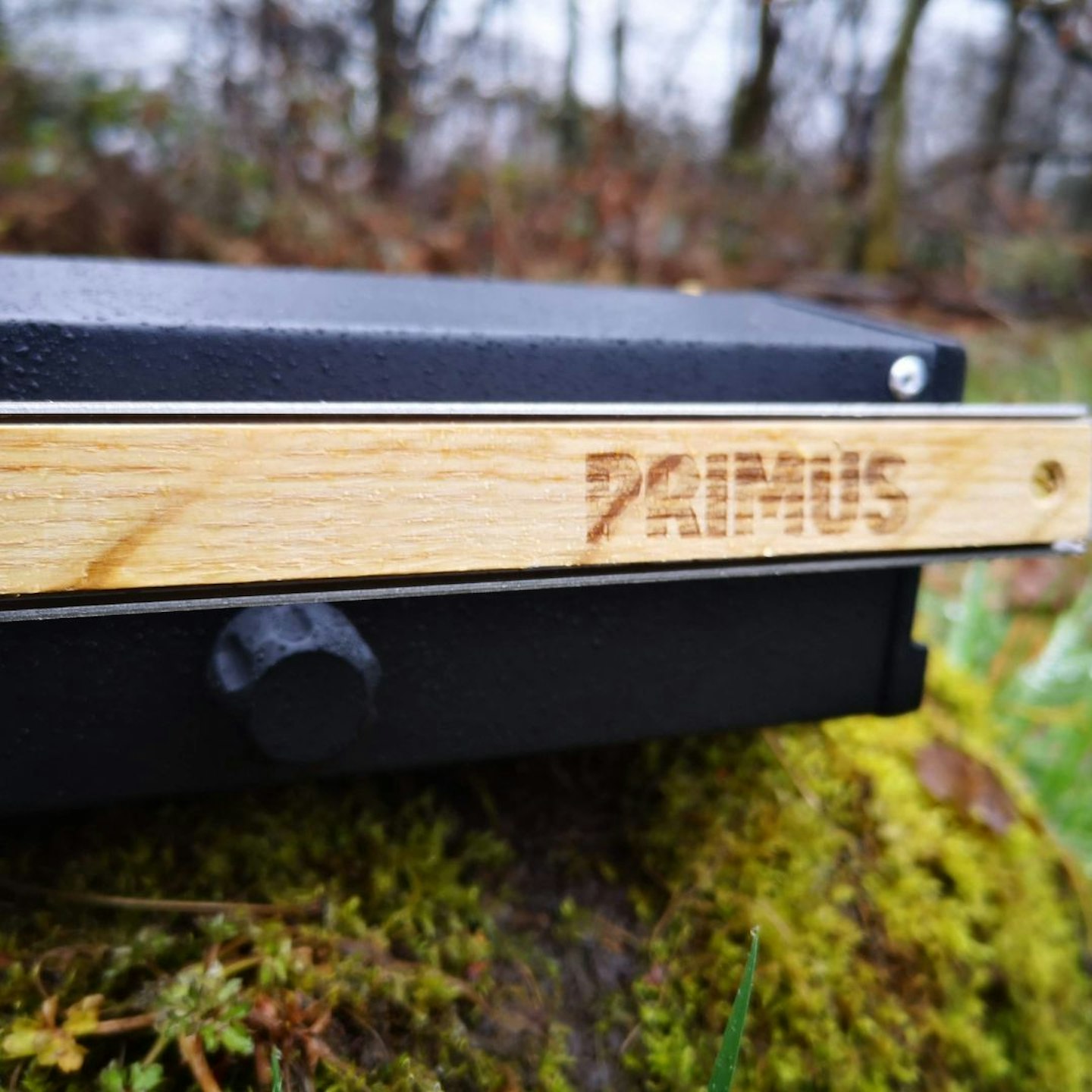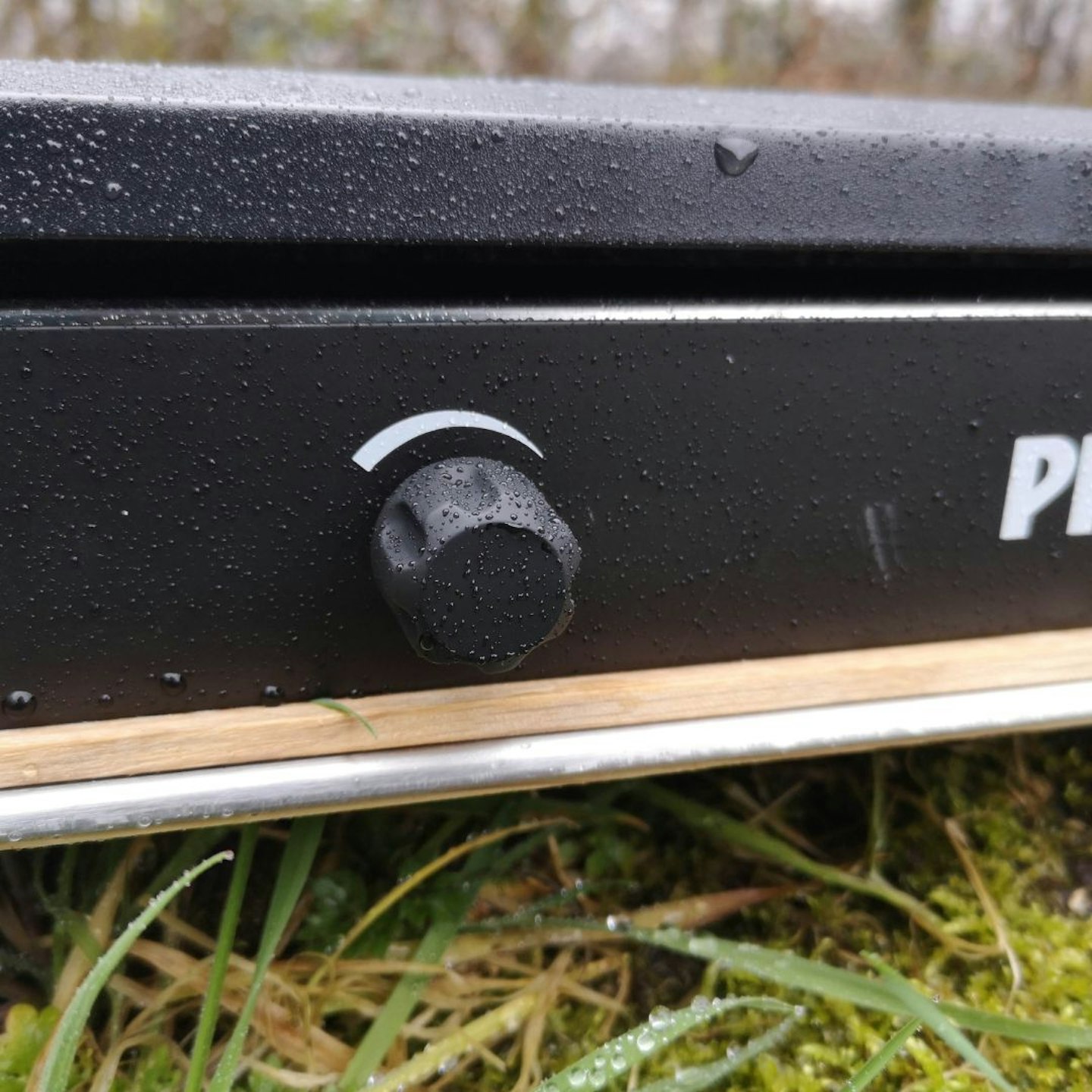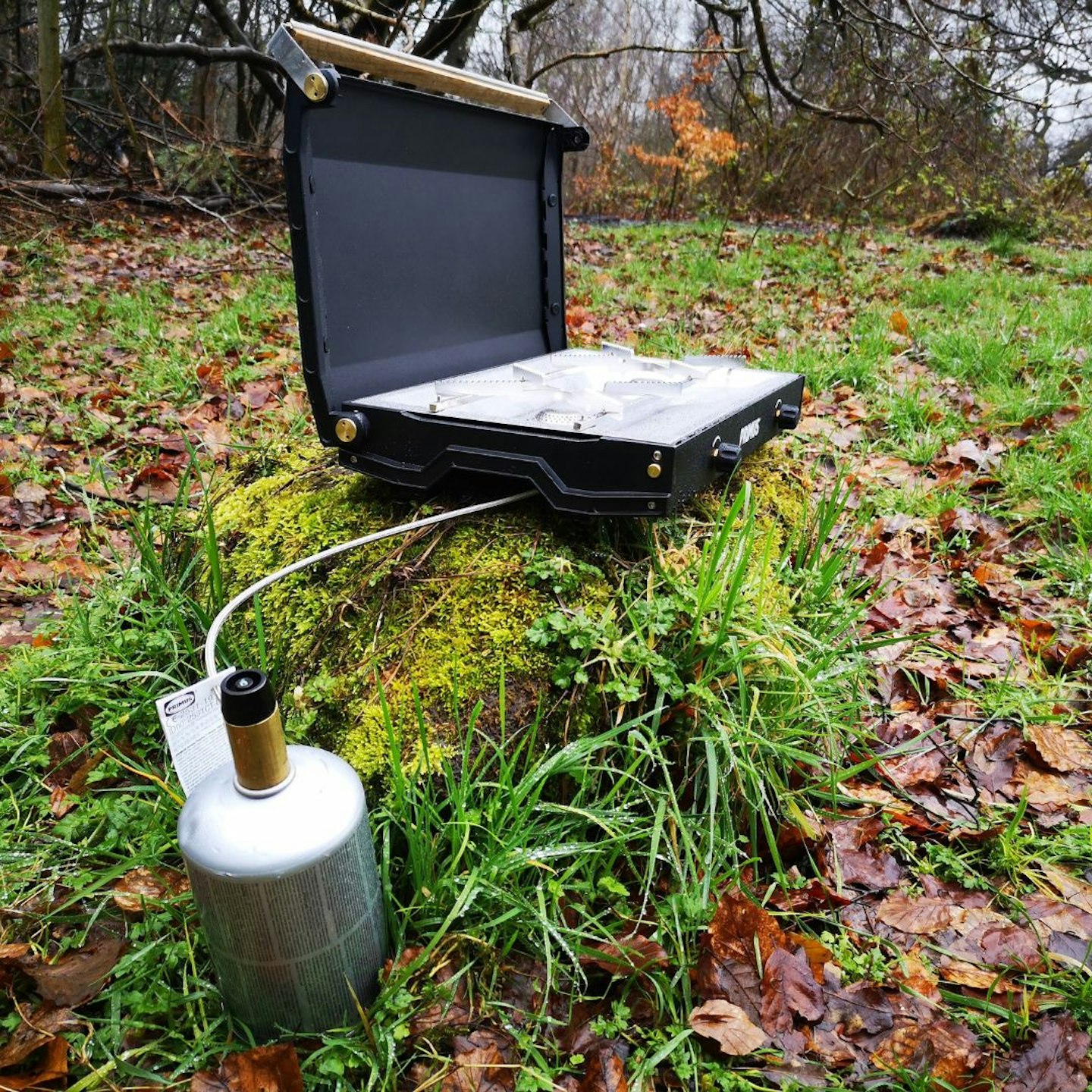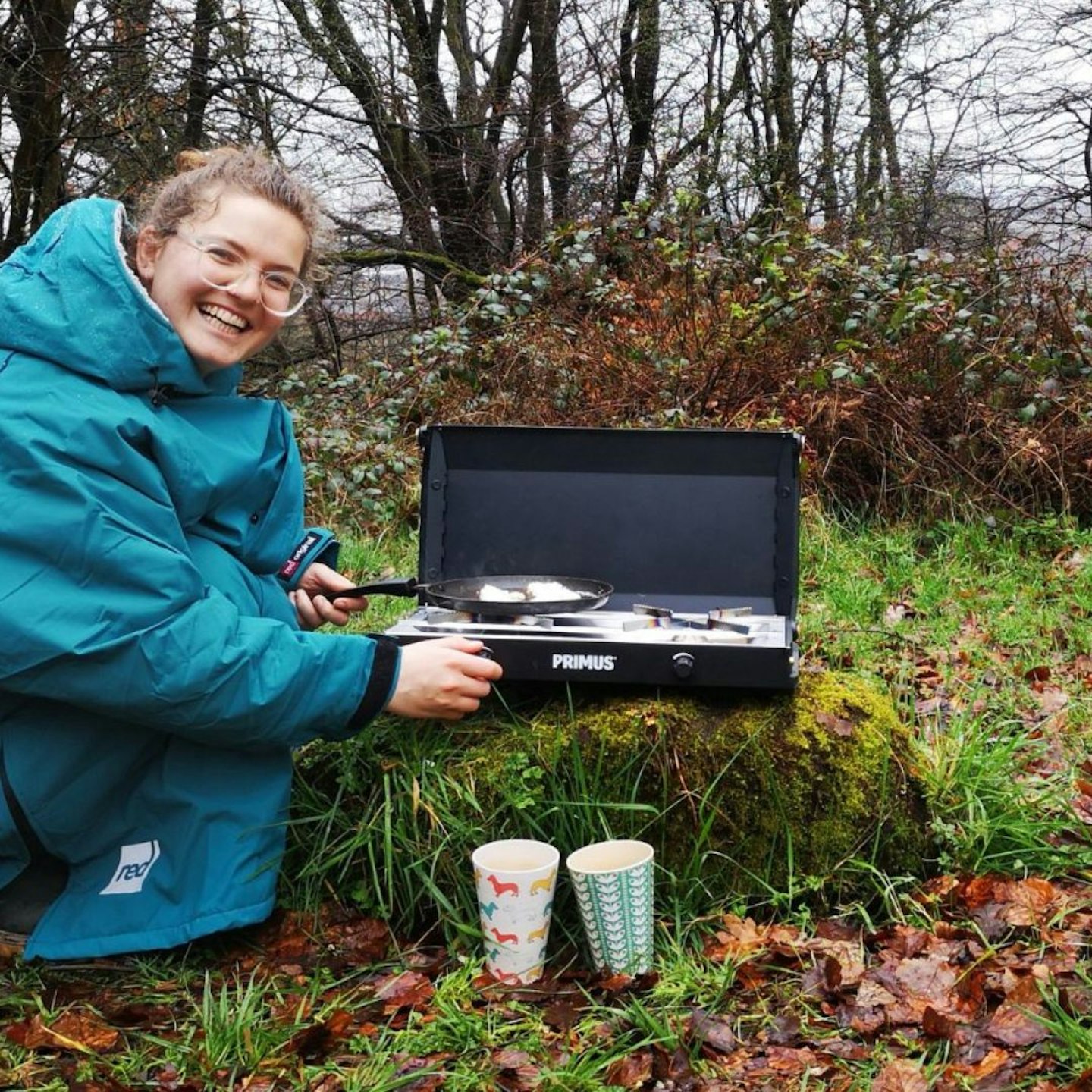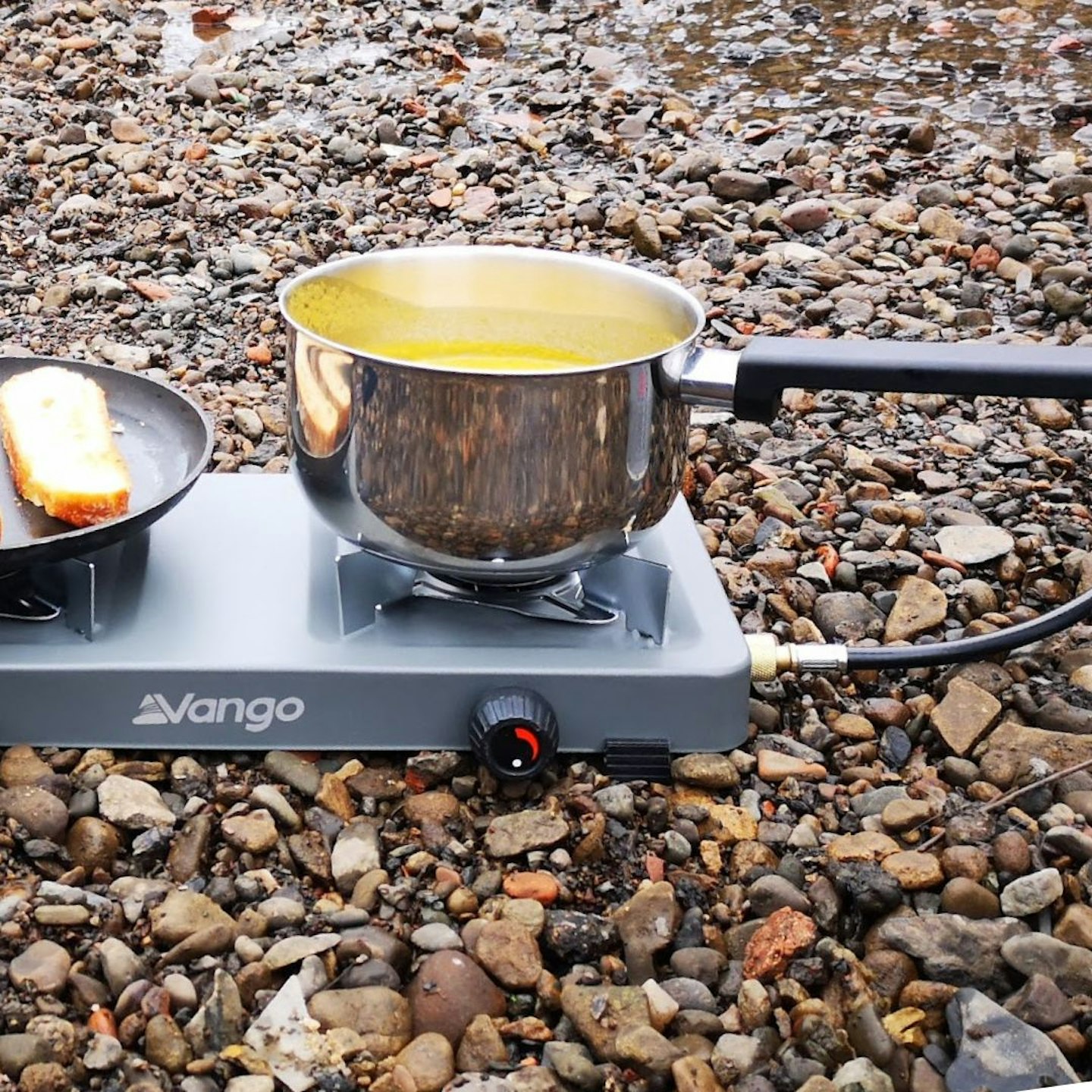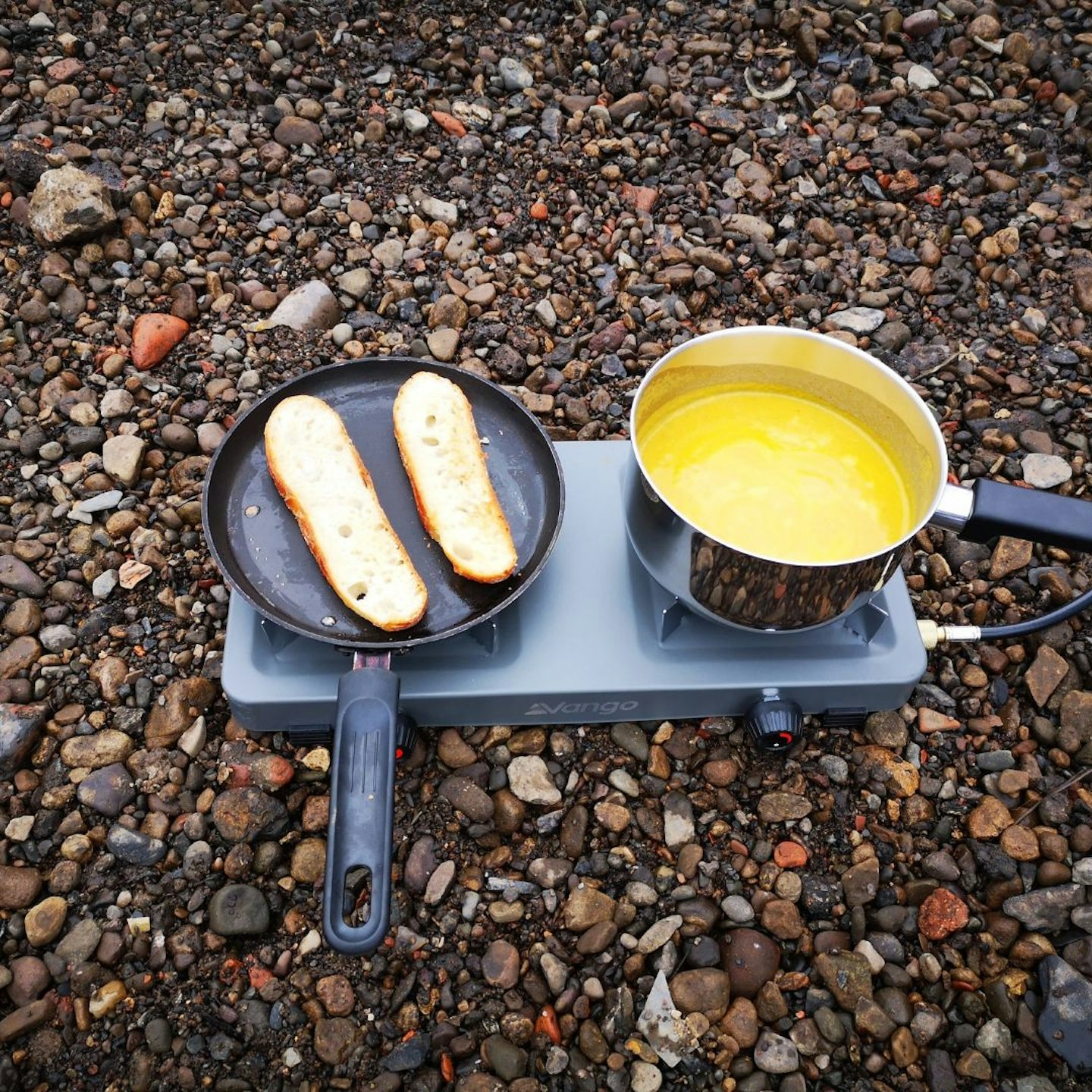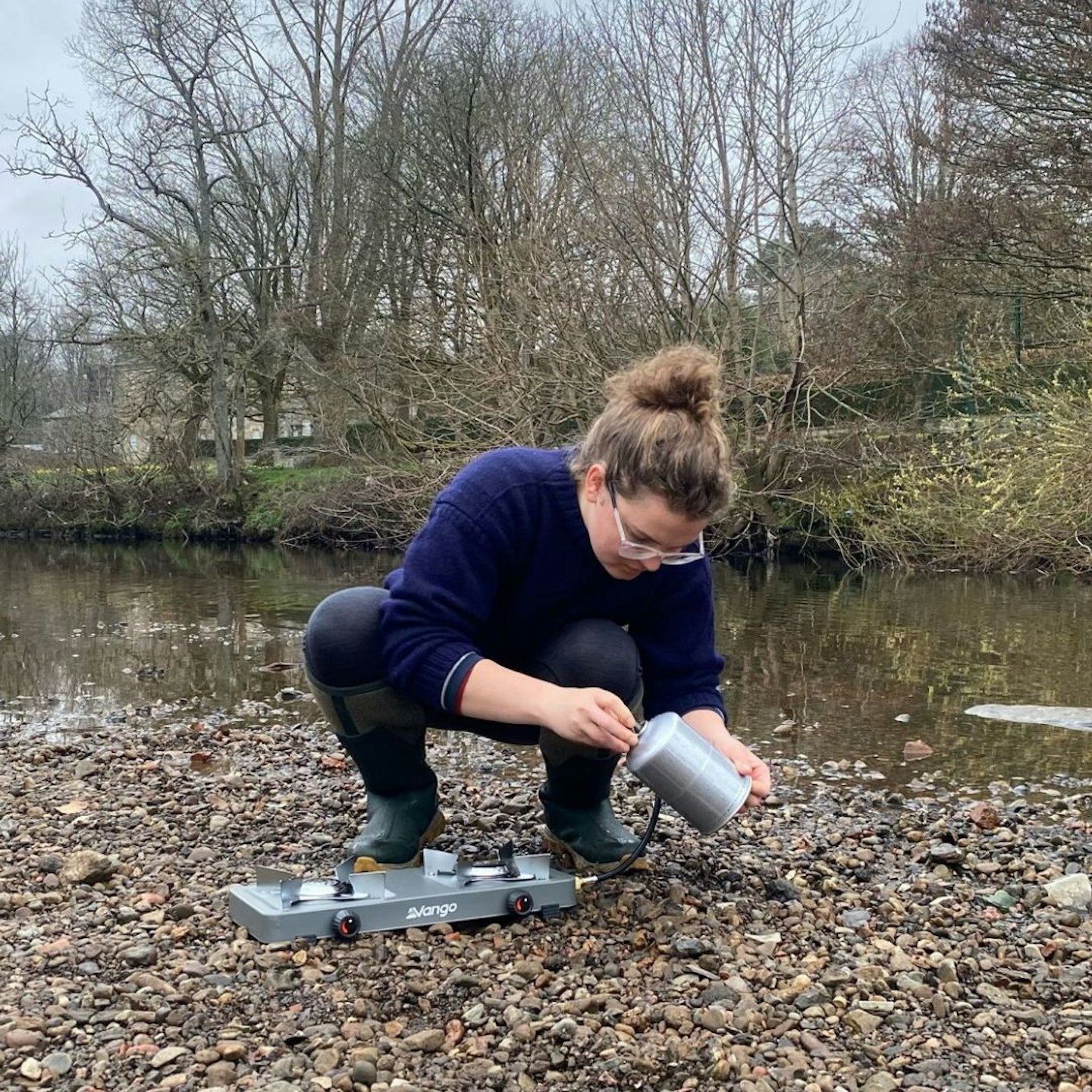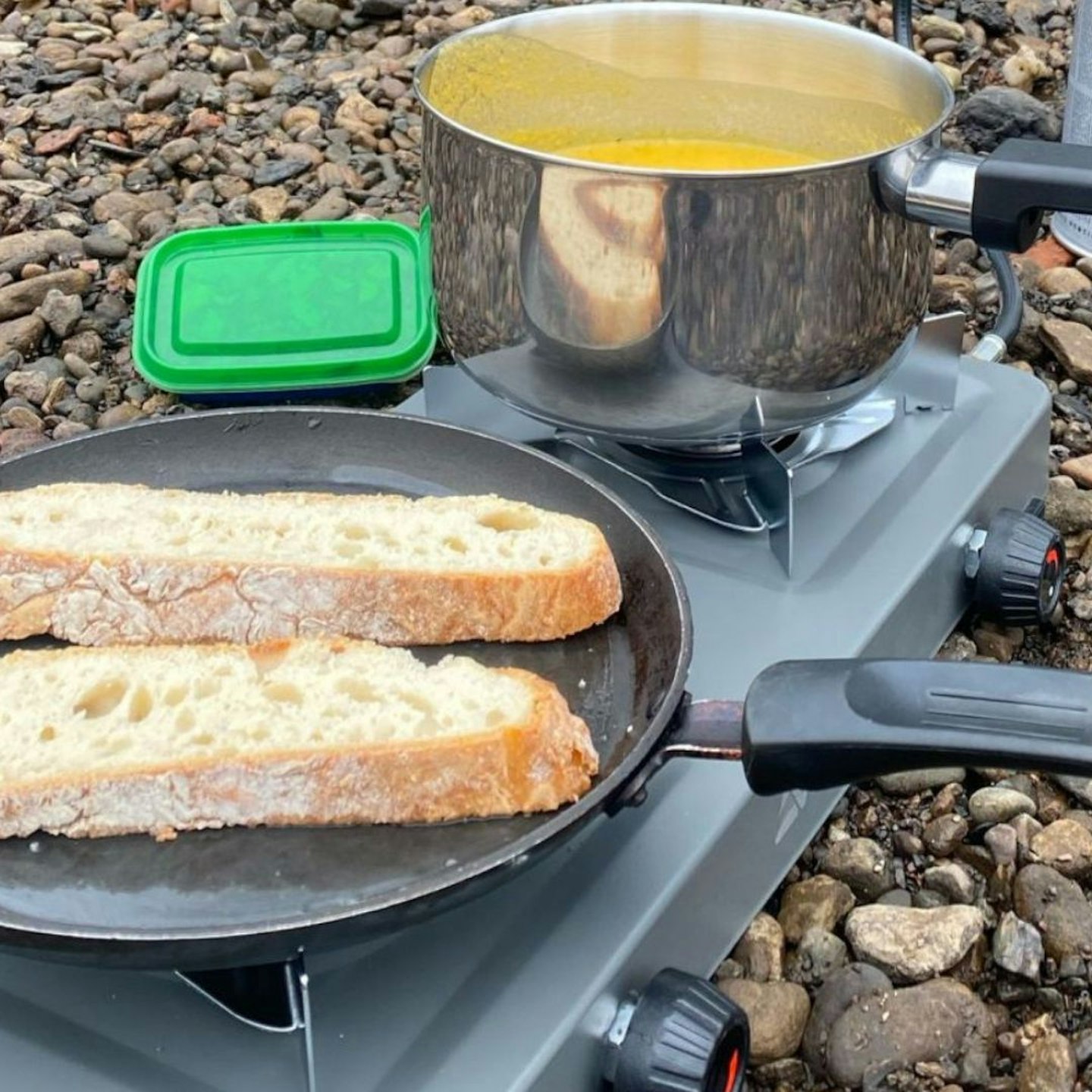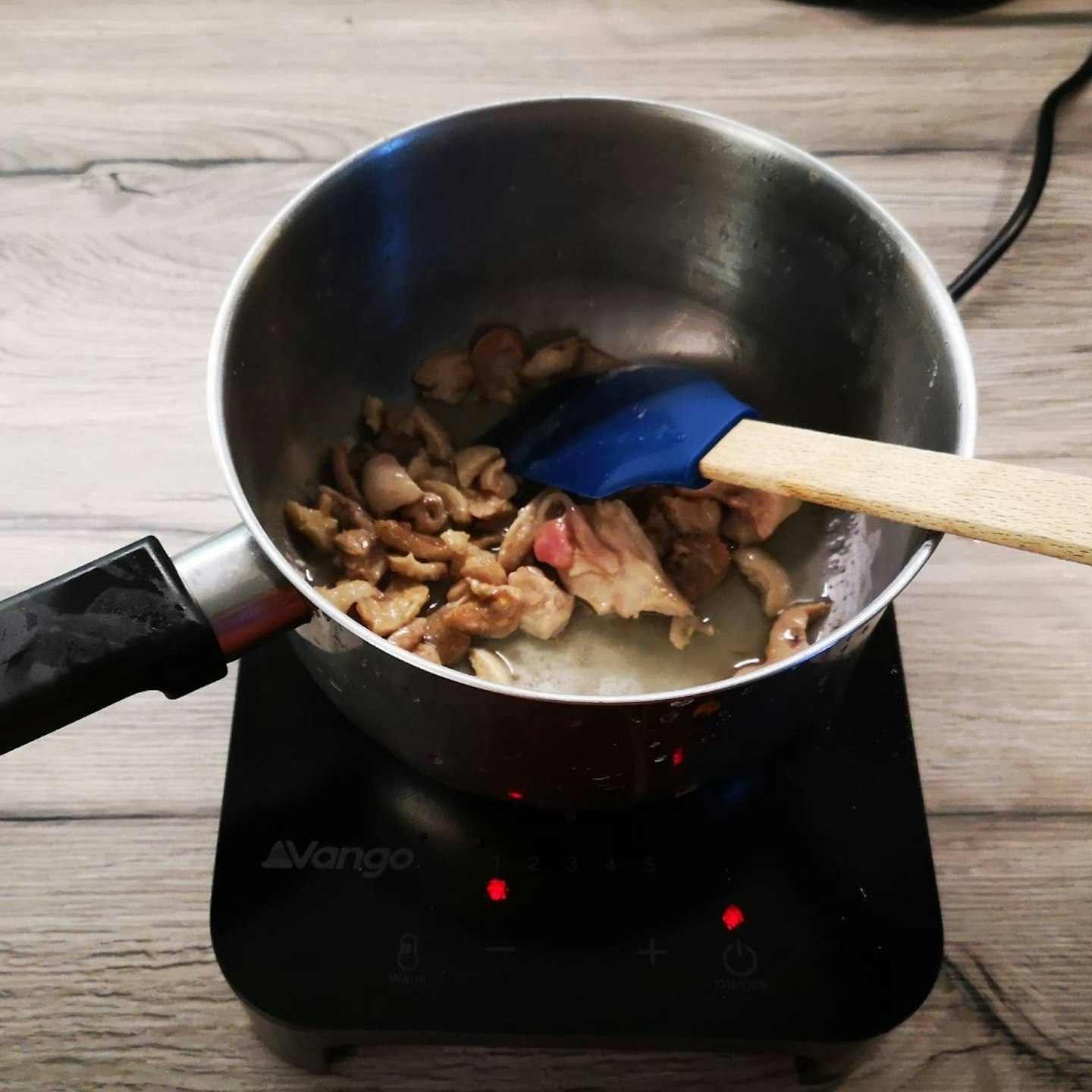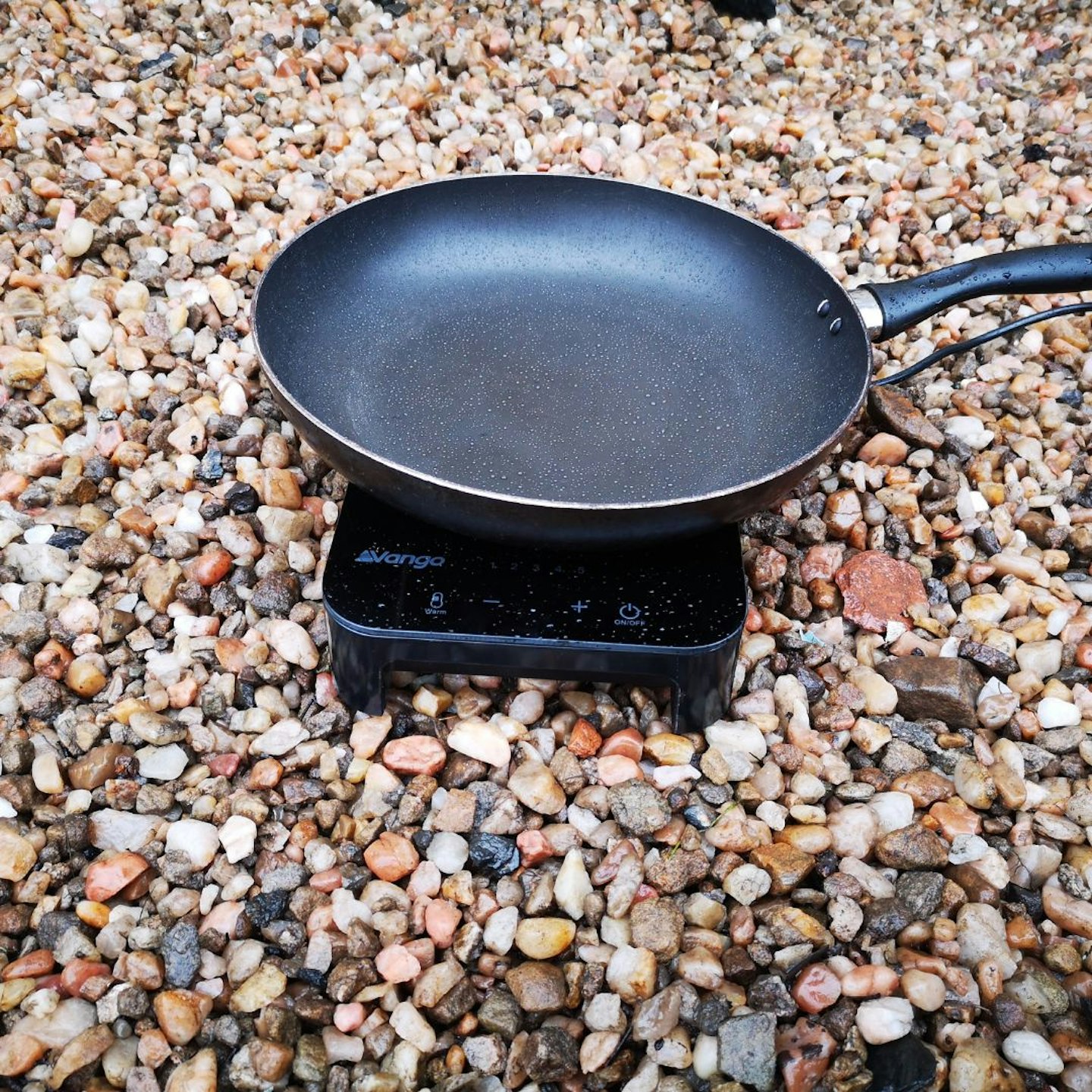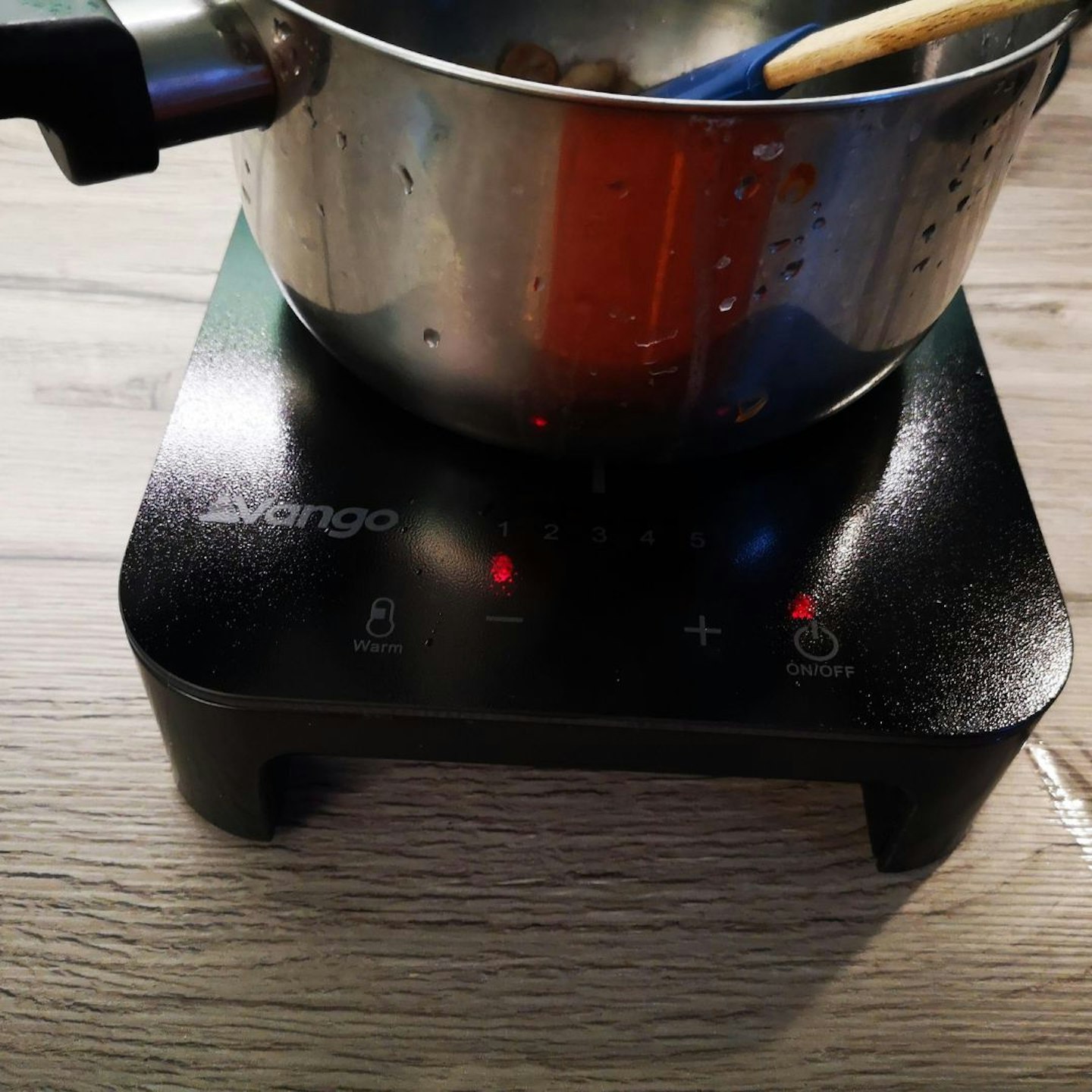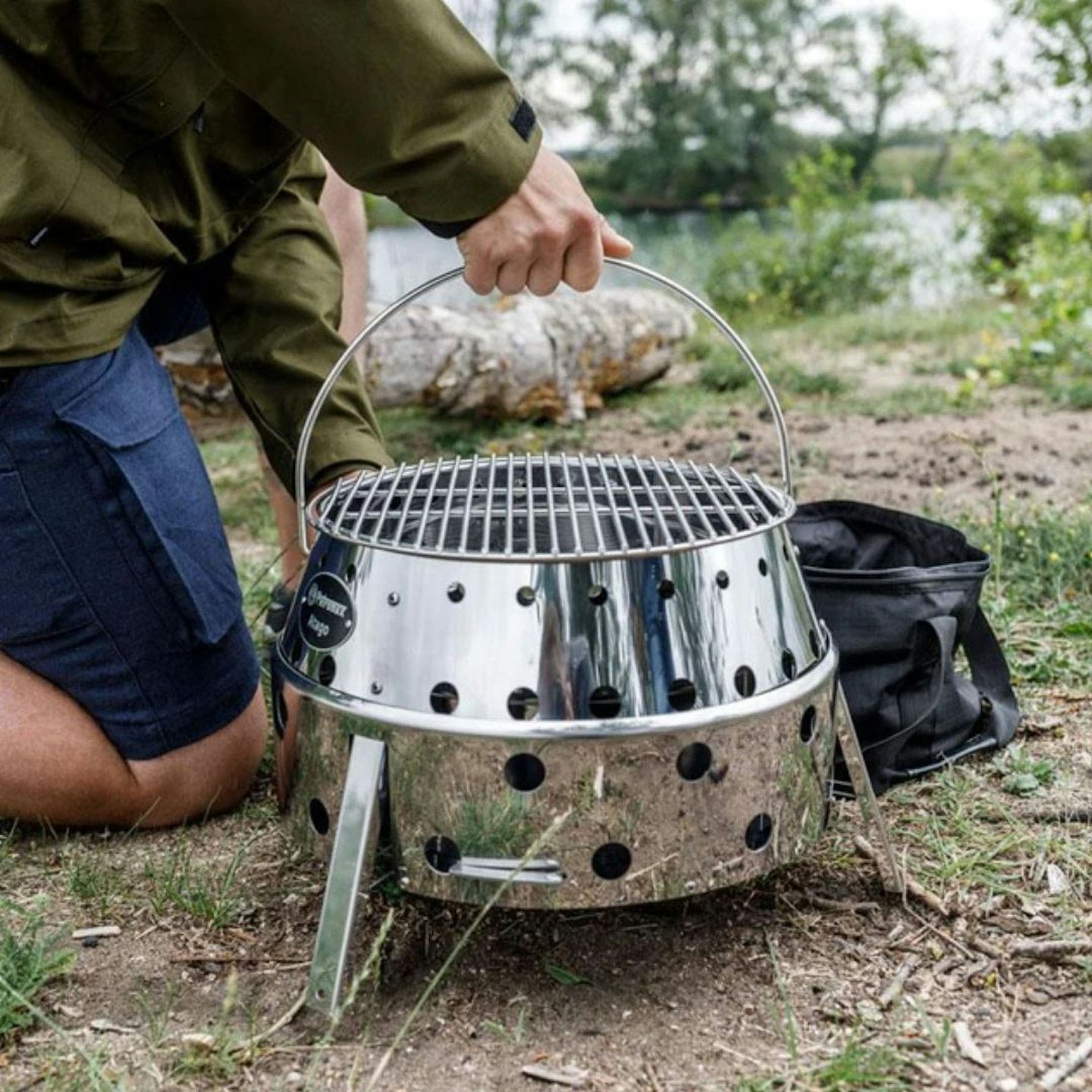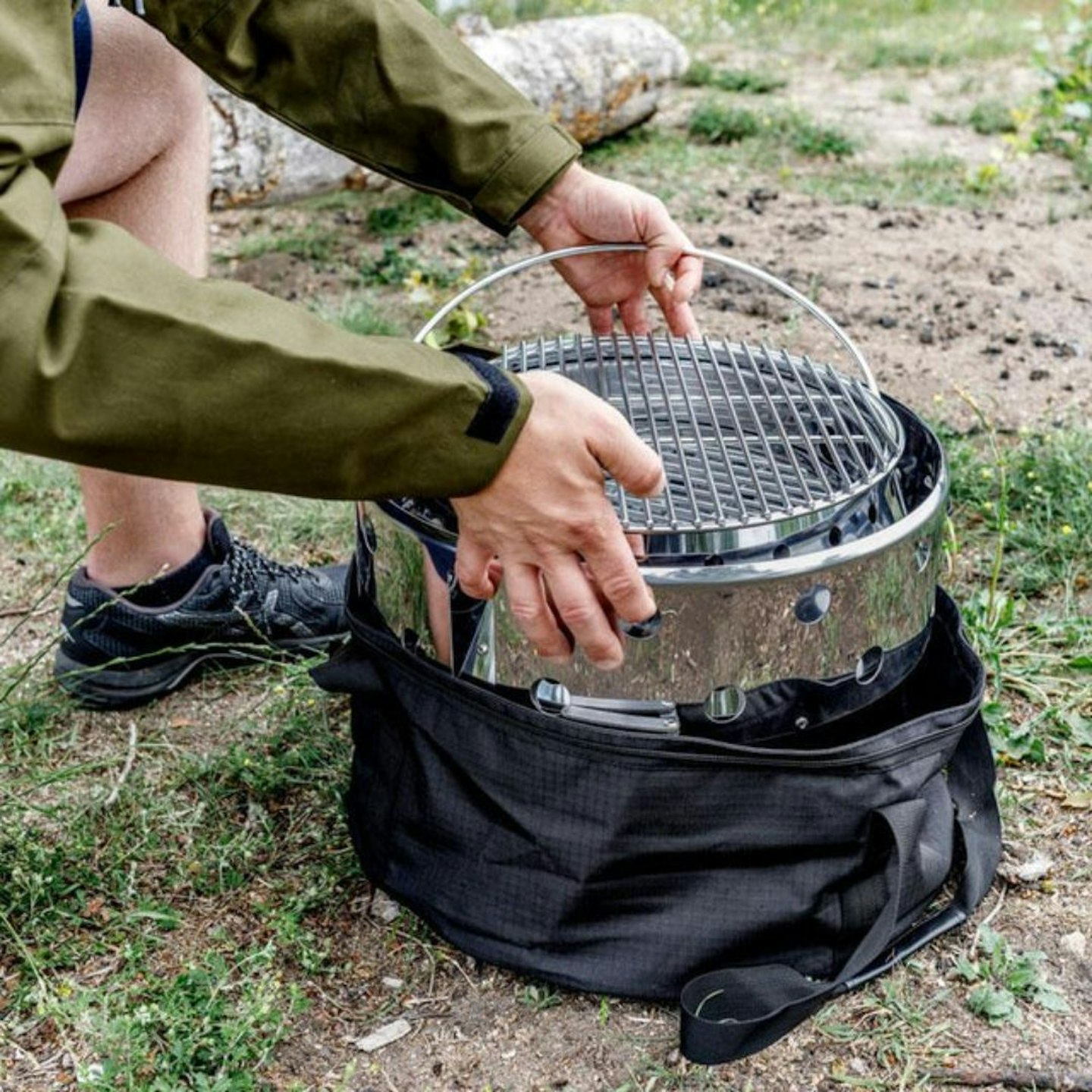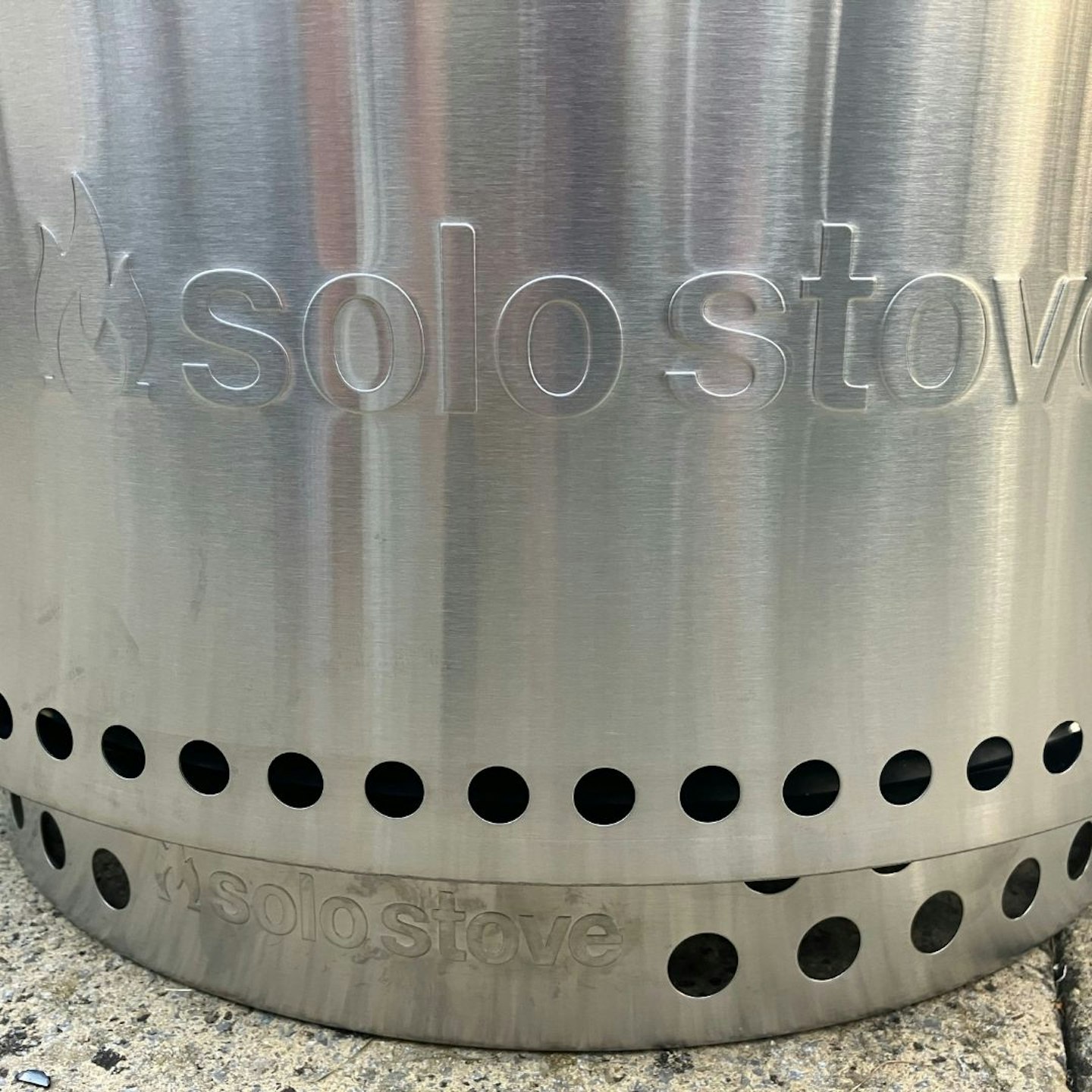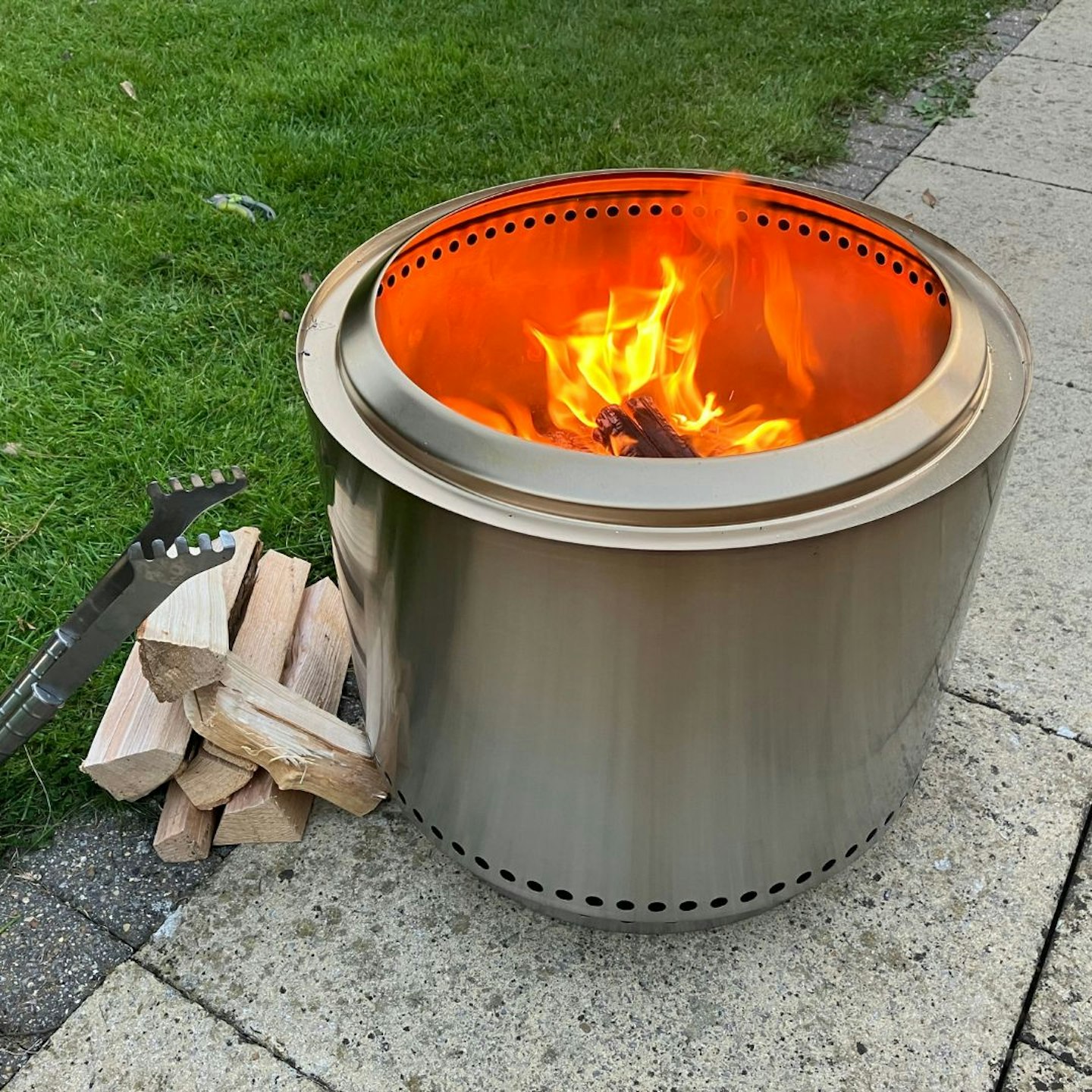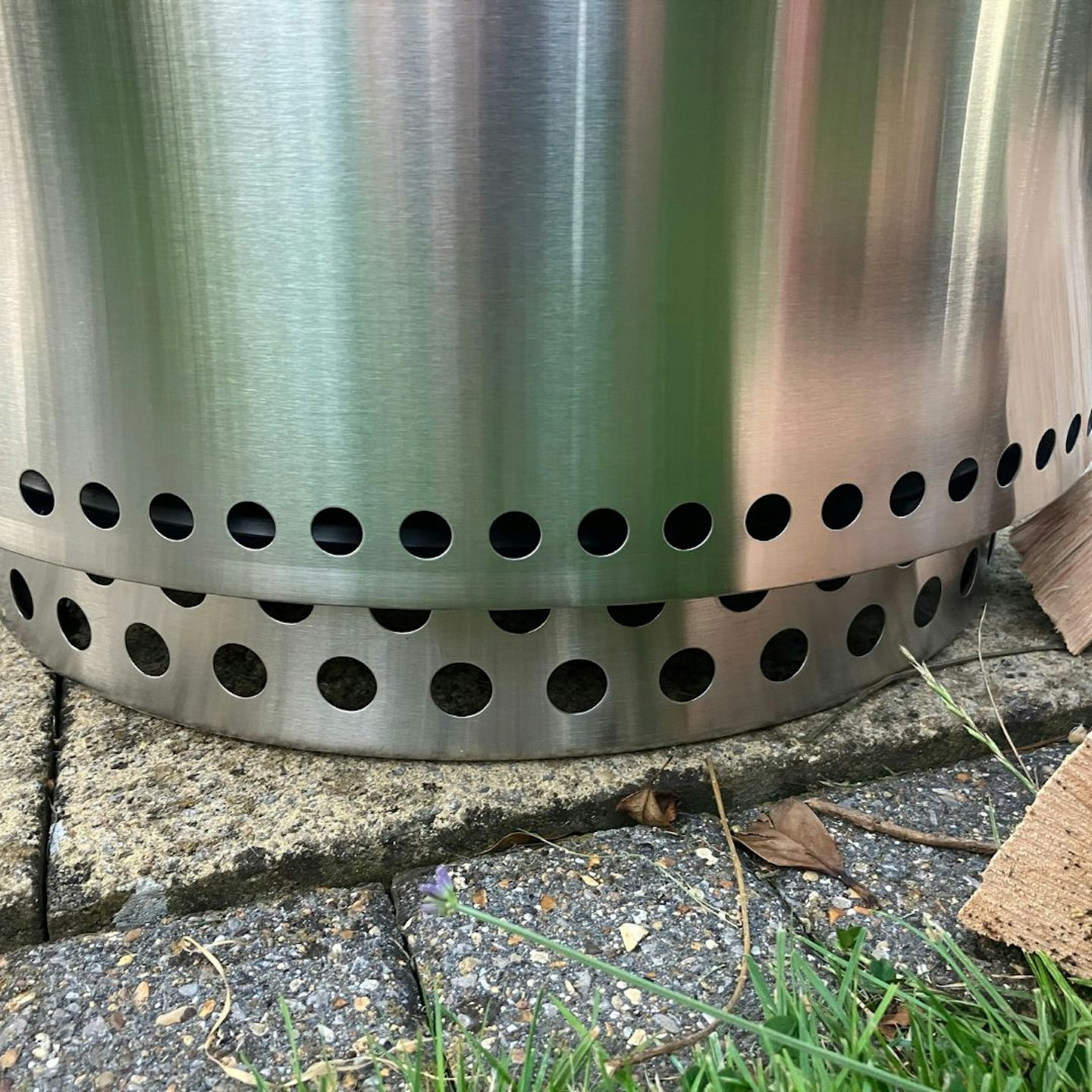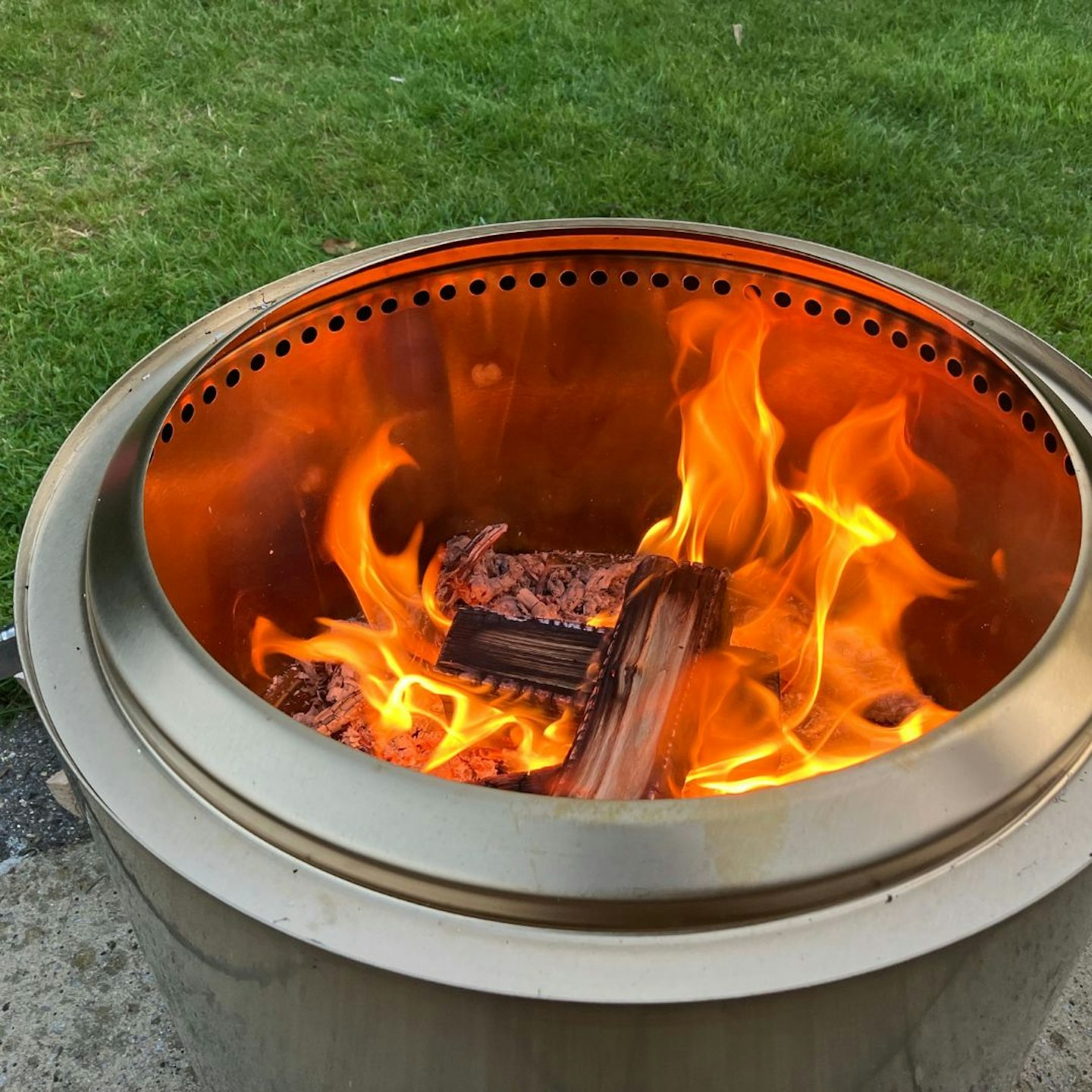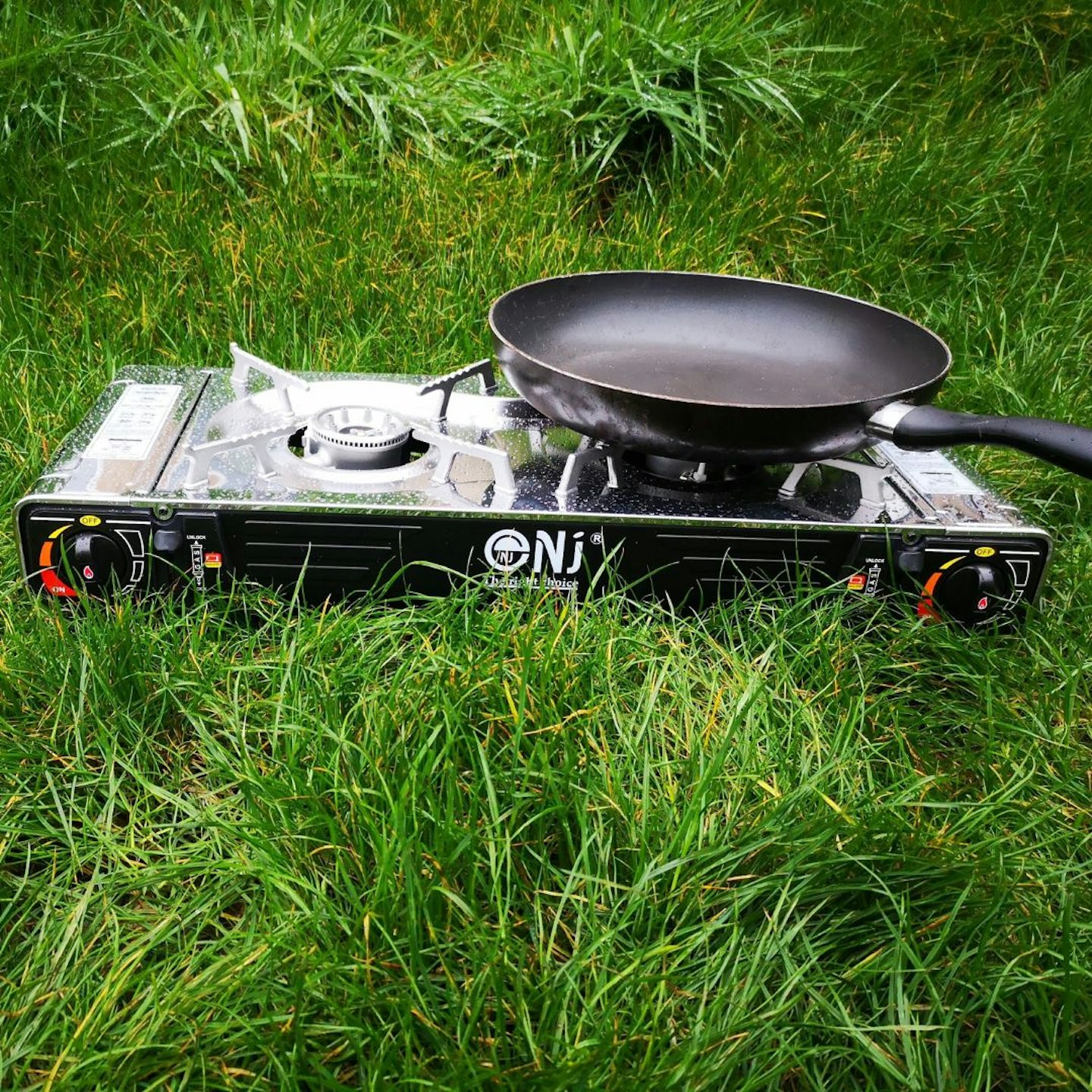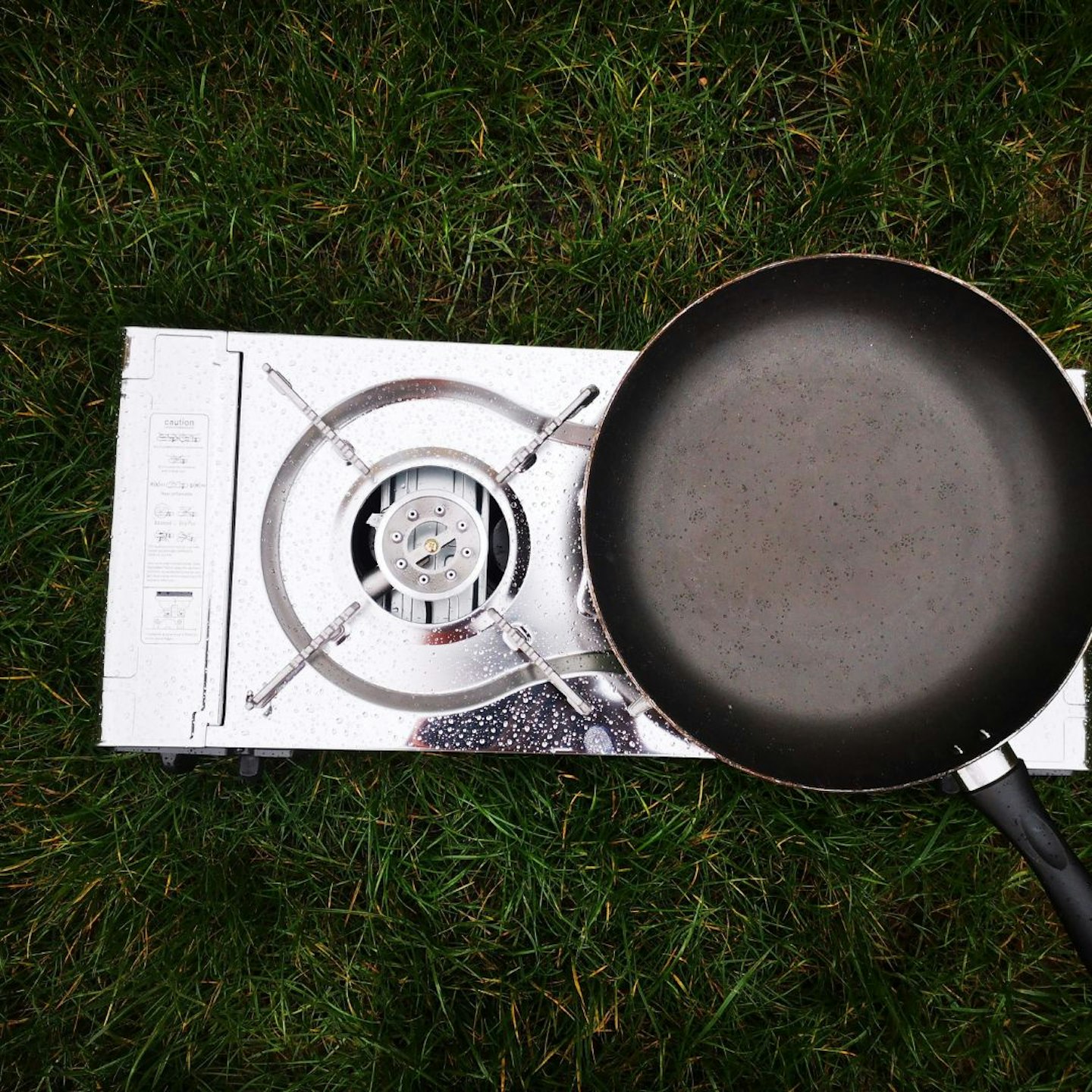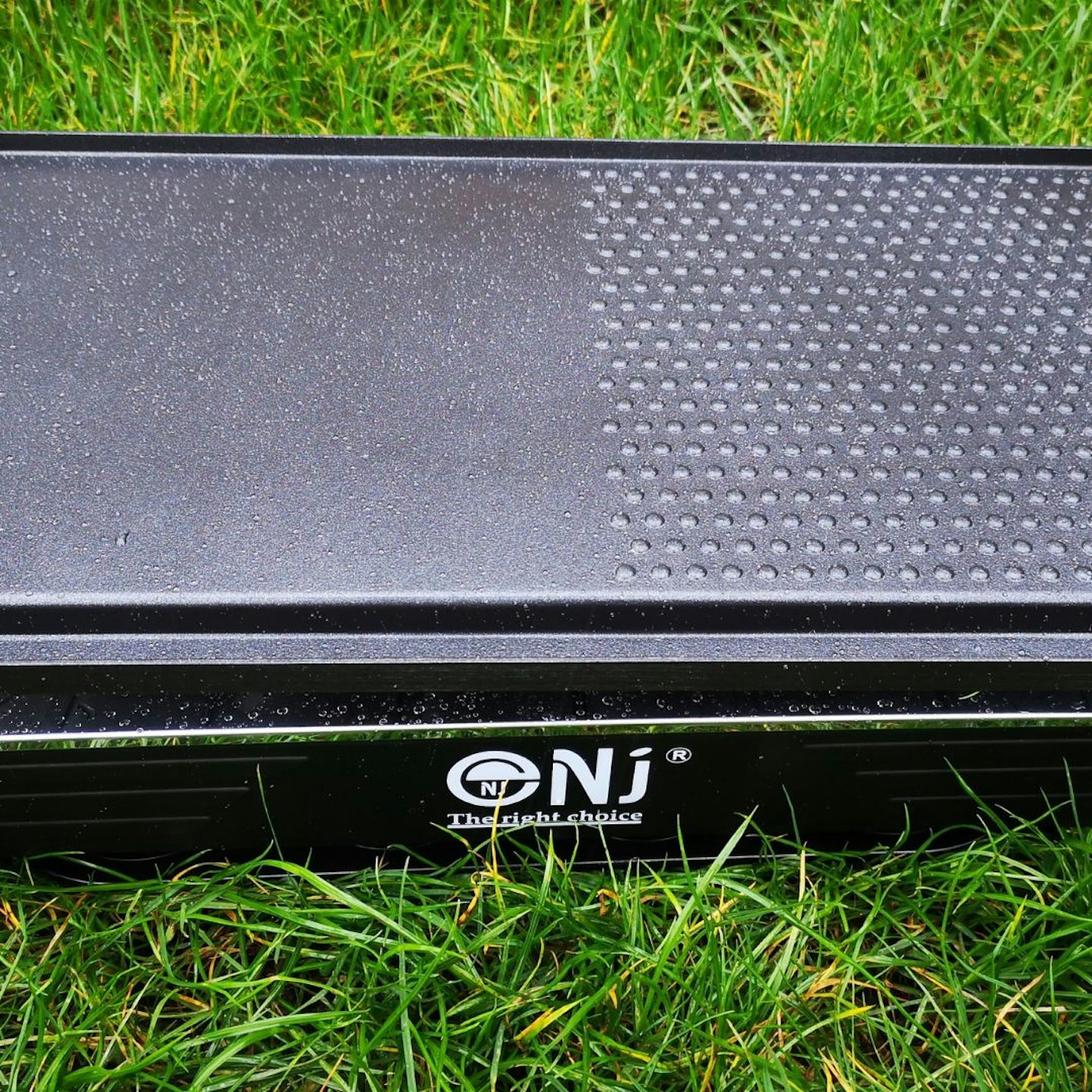Camping is one of life’s great joys. So is food. Combining the two, then is a no brainer – and we think the greatest joy of wild camping or even campsite loitering is being able to make proper scran outdoors. Yep, we're talking sausages, bacon, French toast, casseroles, soups, stews and quesadillas - rather than just having to eat rehydrated sludge using small backpacking stoves that can only really boil water. But to achieve all those delicious things, you need a good camping stove.
Campsite camping stoves – by which we mean ring burners which actually allow you to cook two large pans of food for a hungry crowd - are a common sight at large outdoors shops, and there are plenty on the market to choose from, including fire-pits and gas barbecue-style stoves.
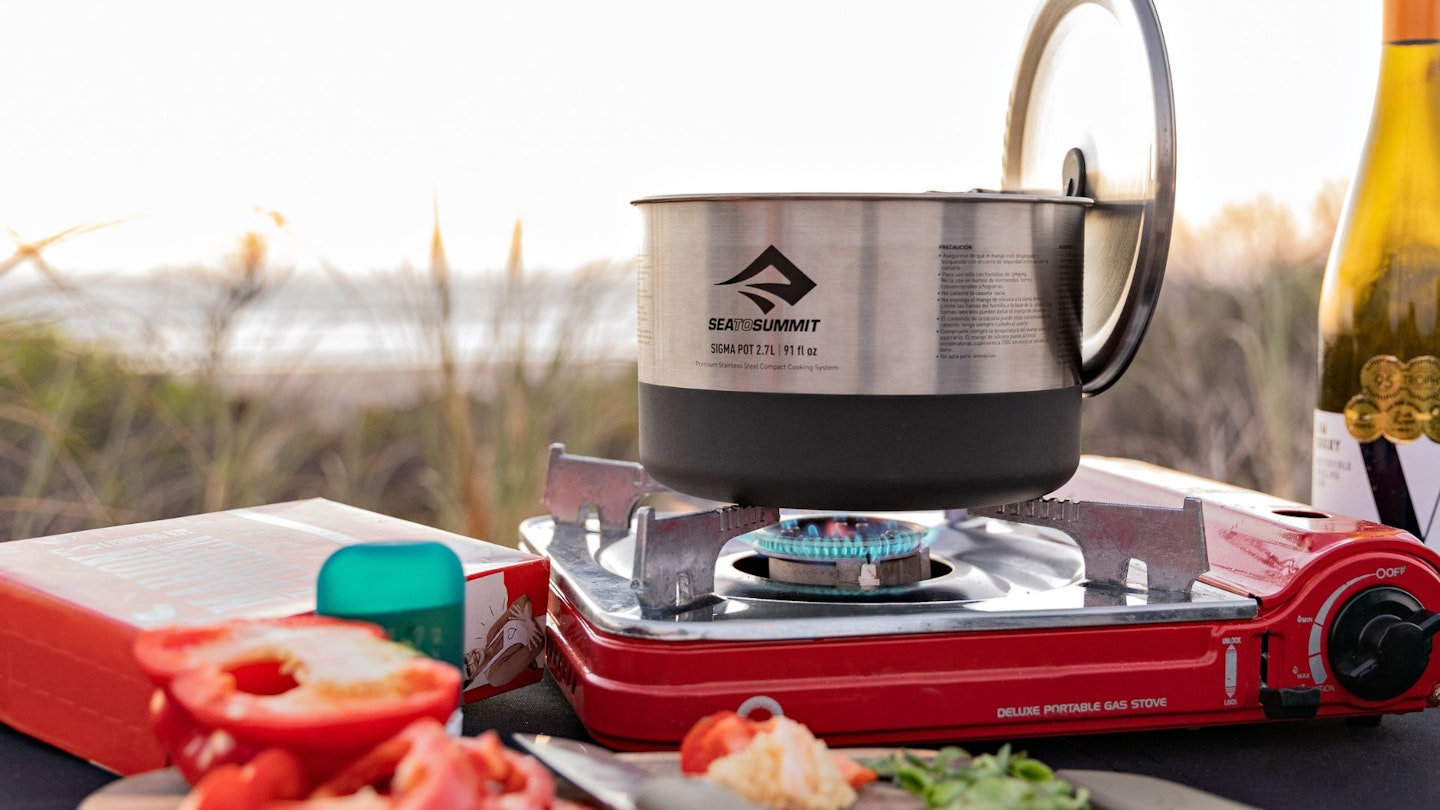
However, it can be difficult to know what you’re after: what type of fuel you should go for; whether you need to buy a separate wind-guard; how powerfully you want your stove to crisp up your bacon on a lightly hungover morning.
Luckily, having been professional campsite loiterers for a few decades, here at LFTO we have the answers to all these questions. This is our guide to the best camping stoves, with tried and tested models for a wide range of applications and budgets.
What are the best camping stoves of 2025?
Best overall camping stove: Primus Kinja Camping Stove
Best Value camping stove: Vango Blaze Double Stove
Best fire-pit grill: Petromax Atago
Best all-in one system: TentBox KitchenBox
Editor's note: This article was last updated in early summer 2025, but luckily for us our tester Fliss (see below) camps as much in winter as she does in summer so keep an eye out for future updates, coming soon.
How we tested the best camping stoves

The tester for these camping stoves was LFTO's own camping junkie and food writer, Fliss Freeborn. Fliss tested the following stoves over a very rainy period in Scotland, cooking up all sorts of tasty things including grilled seafood, noodle dishes, burgers and of course, several gallons of tea.
Fliss has over two decades experience when it comes to cooking outdoors, so she knows exactly what to look for when it comes to heat output, build quality, ease of use, and of course, ease of cleaning.
Visit our how we test page for more info on our testers, methods, and criteria.
The best camping stoves reviewed:
Primus Kinjia Camping Stove
The Kinja from Swedish brand Primus is a fantastic bit of kit. Sturdy, stylish, well-made and easy to clean, it ticks all of the boxes for everything you’d want in a camping stove.
Sure, it costs a little extra than your average two-ring burner, but you get a lot of performance for your money, as well as a lifetime guarantee of quality. Primus makes stuff that lasts, and we can’t see this stove suffering from much in the way of wear and tear anytime soon.
The Kinja benefits from a relatively uncluttered design. It’s one of the few camping stoves on this list which doesn’t have an in-built ignition, but we actually think of this as a plus. It means one less thing to break, fewer knobs and dials to clean, and should it be wet, you’re not going to waste gas waiting for it to light. And the Kinja does indeed work well in all weather, boiling 500ml of water in around 4 minutes even in a proper Scottish downpour.
We especially like the wooden handle which also locks the stove for storage. The entire thing feels beautifully designed and put together, especially the bronze regulator for the gas canister.
Additionally, the Kinja is relatively lightweight for a stove of this size and power, while staying quite compact at the same time. It’s also one of the easiest cleanups on test. We’d recommend it for everything from car camping and campervanning through to base-camp backpacking and even just nights out at the park or at the beach.
Pros
- Meticulously designed
- Very high quality
- Powerful
- Easy to clean
Cons
- Pricey
| Weight | 3.7kg |
| Fuel type | EN14 Gas Canister |
| Power output | 3000W |
| Regulator included | Yes |
| Dimensions | 47.5cm (W) x 29.5cm (D) x 7.8cm (H) |
The Vango Blaze Double is a very cool take on a camping hob. It’s stripped back, minimalist and doesn’t mess about when it comes to getting value for money. You seem to get a lot more stove than you’re paying for, despite the lightweight design.
The Blaze Double is the two ring version of the Blaze single hob. It runs off a standard backpacking gas canister and has two removable rings so it can pack down into a smaller space if needs be. It’s so light and packable that we’ve actually taken it backpacking a few times when there’s been more of a crowd to feed - though it’s also great for lightweight campsite setups if you’re short on space in the boot of your car.
Performance wise, it’s pretty good, with the caveat of it needing to be sheltered for it to work most efficiently, seeing as it doesn’t come with any sort of windshield. It does, however, have plastic feet for extra stability on rough ground should you need it. But we’ve found that the footprint actually digs into sand, rock and grass really well and we’ve not needed the feet at all.
Pros
- Lightweight
- Very portable
- Great value
Cons
- Sharp edges
- No windshield
| Weight | 1.35kg |
| Fuel type | EN14 gas cartridges |
| Power output | 3000W |
| Regulator included | Yes |
| Dimensions | 43.5cm (W) x 22.5cm (D) x 8cm (H) |
The Vango sizzle stoves are induction hotplates designed for outdoor use. There is both a single and a double version; we tested the single and were mightily impressed with its overall performance and concept.
If you’re going to be at a campsite with a van, or with a large family tent and an electric hookup, we wouldn’t hesitate to buy the double version of this stove over anything else on this list. Firstly, it’s a lot safer than gas: there’s no chance of suffocation, leaking or explosions with the Sizzle. You’re also far less likely to burn yourself, set fire to your own tent, or knock a pan off it due to the surface being entirely flat, unlike gas stoves where the pan must balance above the burner.
Another advantage to the Sizzle is that you don’t have to keep replacing gas canisters or worry about running low. That’s a huge plus in our minds! Additionally, it’s designed to work just as well in the wet, so if you do need to be outside when it’s raining, you needn’t worry about being electrocuted.
Performance wise, we’ve also been convinced. It has 7 levels of heat, with the lowest just about keeping things warm, and the highest bringing water to the boil in no time; there’s a lot of control within this range too. It’s easy to use and is incredibly responsive, unlike older induction hobs.
Of course, with any induction stove, the caveat is that only certain pans will work. You’ll need to check if your camping pans are compatible, or if you’re not worried about keeping things light, simply bring along something made of cast iron (or any modern kitchen pan manufactured in the last 5 years). Overall, we love the Vango Sizzle and think it’s a fantastic addition to a camping setup where mains electricity is available.
Pros
- Very safe
- Incredibly efficient
- Easily cleanable and stowable
Cons
- Expensive
- Needs mains electricity to work
| Weight | 1.42kg |
| Fuel type | Mains power |
| Power output | 800W |
| Regulator included | N/A |
| Dimensions | 23cm (W) x 19cm (D) x 6cm (H) |
If you want the efficiency of a Jetboil but with the ability to do more with it in a campsite setting – including cooking for more than one person – an all-in-one set like the PrimeTech from Primus is the way to go.
Sure, it's a not exactly going to do you the same job as some of the other camping stoves on this list, but if you're after something that you can take backpacking as well as use from the comfort of a campsite, you can't go wrong with the PrimeTech. This 1.3-litre kit works for 1-3 people, while the 2.3-litre version can feed 2-5 people. You're limited to one pot and one burner, of course, but there's a lot you can still do with that.
Like a PCS (personal cooking system), the burner and pots are designed to work together, with a heat exchange on the underside of the pot and a dedicated windshield.
The burner has the advantage of being mounted off-canister, making it more stable and wind protectable. Like much of Primus's range, the PrimeTech feels durable, solid and built to last, while still remaining packable for your mountain adventures.
Pros
- Efficient
- Great for smaller camping setups
- Compact and lightweight
Cons
- Just one burner
- Expensive
| Weight: | 903g (1.3L) |
| Fuel type | EN417 LPG canister |
| Power output | 2000W |
| Regulator included | Yes |
| Dimensions | 10.5cm x 18cm |
Where the other units here are purely stoves, the KitchenBox is indeed a foldout kitchen.
What starts as a curious box ingeniously transforms into a cooker complete with bench space and even seating.
It's outrageously expensive but if that doesn't bother you, you'll love the KitchenBox. We used it up in Scotland along with a TentBox tent and thought it was excellent.
The stove runs off standard screw on gas cannisters and has three burners, so heating or boiling anything takes to time at all. Folded out you get around a metre of bench space, and supplied with the KitchenBox are two stools and a collection of cookware.
At 19.5kg this is quite a heavy thing but it packs away reasonably compact and took up about a third of the boot space in our Dacia Duster.
Pros
- Surprisingly compact
- Powerful stove
- Lots of accessories included
Cons
- Overpriced
| Weight | 19.5kg |
| Fuel type | EN417 cartridge |
| Power output | Not stated |
| Regulator included | Yes |
| Dimensions | Closed: 55cm (W) x 33cm (D) x 38cm (H) | Open: 110cm (W) x 95cm (D) x 62cm |
Petromax is a muscly German campfire brand, with a focus on rugged outdoor cookware and firepits. The Atago is their flagship product: it’s a barbecue, grill and firepit all in one, and looks to redefine what we mean when we say “let’s all have a beer around the fire”.
Make no mistake, this is a hefty bit of kit. Sure, it collapses and has a handle; the portability is there but at 6.1kg you won’t be wanting to carry this very far for very long. Luckily, the Atago excels at being plonked in the middle of a circle of camping chairs as the focal point for a group camping trip, or nestled into the sand on the beach.
It takes either wood, charcoal or eco-friendly briquettes and produces a hot, almost smokeless fire that is perfect for cooking on in around 30 minutes; much faster than setting fire to your average wooden pallet.
While we haven’t yet had a chance to test the dutch-oven compatibility for bread and casseroles, the Atago has performed brilliantly as a grill for meat, vegetables, and even for putting a non-stick hotplate on for fried eggs and pancakes. It’s easy to boil water on too if you’re in possession of a camp kettle or a pot with a lid. The heat is surprisingly even and controllable too.
The only downside is that it’s not exactly an instant cooker. You do have to wait for everything to get going (and when it does, it’s great) but if you’re using this as your main cooking apparatus, you’ll probably want to pack a backpacking stove for the mornings where you just want coffee and you want it now.
The other downside is the price. It’s not cheap. But seeing as it’s built to last, and you’re getting a firepit, cast-iron compatible outdoor oven (you can buy a bunch of accessories for the Atago too!) and a barbecue all in one, then it’s certainly not the most spendy option on the market.
Pros
- Excellent heat output
- Surprisingly efficient
- Great fun to use
- Fantastic barbecue flavour
Cons
- Expensive
- Heavy
- Not suitable for every camping meal (i.e. making drinks or porridge)
| Weight | 6.1kg |
| Fuel type | wood, charcoal, briquettes |
| Power output | N/A |
| Regulator included | N/A |
| Dimensions | 43.18cm (W) x 43.18cm (D) x 27.94cm (H) |
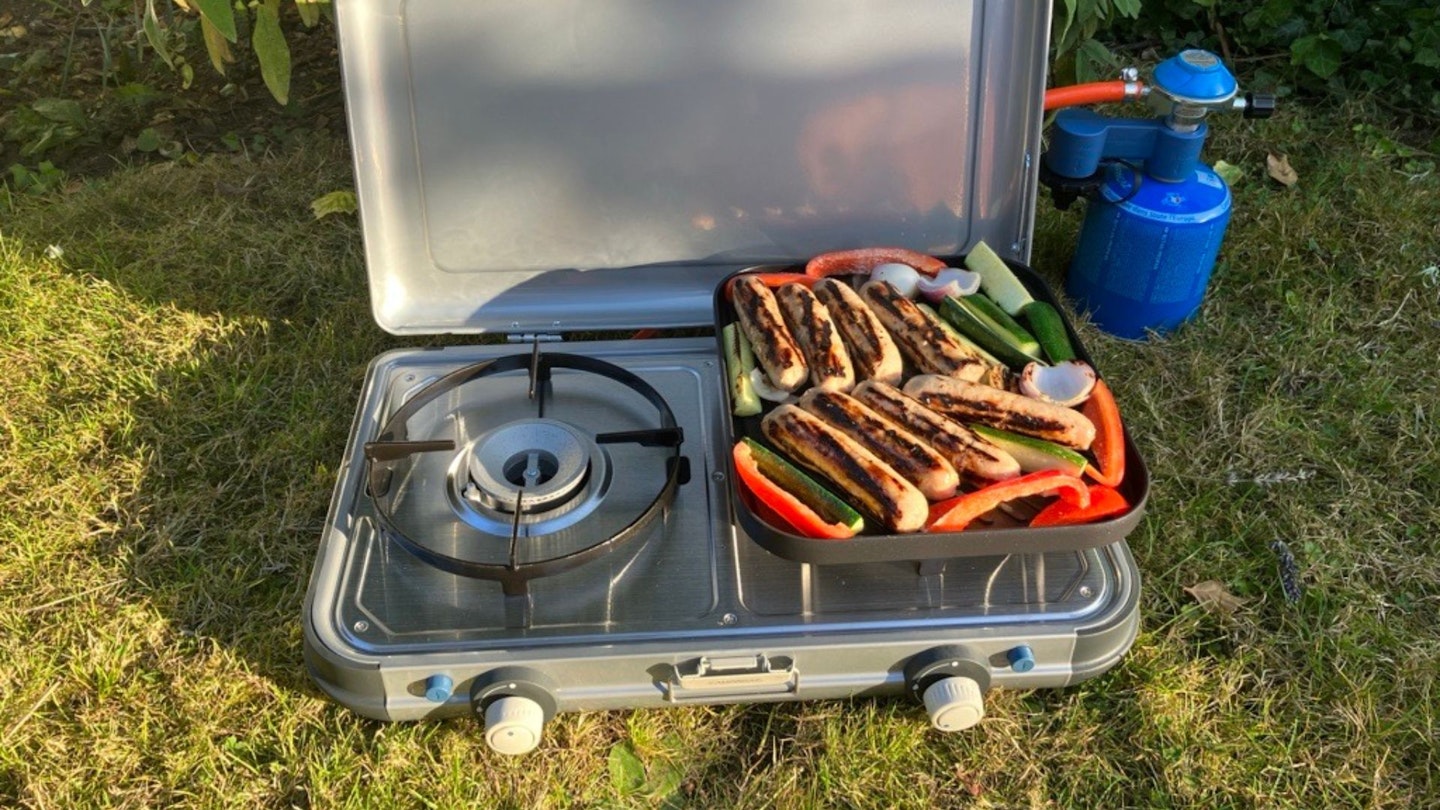 LFTO / Fliss Freeborn
LFTO / Fliss FreebornThis camping stove differs from many on the market due to coming with two separate griddle plates, essentially becoming a portable gas barbecue. One plate is flat, for pancakes or eggs; the other is, well, more griddly so you can get some fab char marks on your steak or your red peppers. Both are fabulously non-stick and easy to clean.
Of course, if you’re not into steak and eggs for breakfast you can remove the griddles and Lo! The stove is again, a stove. It has good performance and control, with a built-in ignition and windshield, and the whole thing folds away for easy storage.
The other advantage to the CampingGaz Grill and Go is that it runs off both the smaller backpacking gas canisters or the larger (cheaper to run) butane canisters, which make it both ideal for car camping, or for family campsite use. The dual regulator is sold separately but it’s worth buying to give you both options.
And sure, it’s not the lightest, most compact, or indeed the cheapest on test. But it’s from CampingGaz, one of the most trusted suppliers of stoves and gas on the market, so you’re guaranteed quality here.
Pros
- Powerful burners in comparison to other stoves
- Griddles are included
- Comes with a carry bag
Cons
- You can get similar options for a better price
| Weight | 5.3kg |
| Fuel type | R904, R907, Butane or Propane Cylinder |
| Power output | 4000W |
| Regulator included | Yes |
| Dimensions | 49cm (W) x 38cm (D) x 12cm |
Before you run away when you look at the price, let it be known that the Solo Stove Bonfire 2.0 is more than a firepit. It’s an incredibly effective, blisteringly hot way of cooking communally, which not only provides high quality grub, but it’s almost completely smokeless too. Therefore, it’s a great centerpiece for a social evening outdoors - even when the nights draw in and it starts getting chilly.
It’s also good for people who suffer from asthma, or for using in built up or urban environments where not everyone appreciates the smell of smoke wafting through their back gardens.
In terms of its effectiveness as a camping stove, sure, it’s not one for everyday use for things like porridge, coffee and eggs but it’ll cook you a fantastic steak or some juicy burgers in absolutely no time. You also don’t need to bother buying the expensive kit that comes with it to do this. A cheap adjustable grill will do the trick rather than the whopping £220 needed for the grill top and hub.
And at just over 10kg, it’s not exactly backpacking compatible, but it does collapse into a carry case for ease of use at campsites or at the beach. The patented removable baseplate also makes for easy cleanup of ash.
We think the Solo Stove Bonfire has a lot of untapped potential as a homemade rotisserie chicken vessel, and are excited to further test out the endless possibilities of open fire cooking without the annoying smoke.
Pros
- Stainless steel fire pit that doubles up as a grill
- Impressive airflow that reduces smoke
- Easy to clean thanks to removable ash pan
- Feels very high quality and built to last
Cons
- Expensive
- It is portable, but heavy and bulky at just over 10kg
| Weight | 10.6kg |
| Fuel type | Wood, charcoal, briquettes |
| Power output | N/A |
| Regulator included | N/A |
| Dimensions | 49.5cm diameter 35.5cm height |
This is the only gas stove on the list that doesn’t have a separate fuel regulator or pipe. Instead, the NJ-02 double burner gas stove uses the smaller 227g cylindrical cartridges: one either side for maximum power to each ring.
This is super useful for places like festivals, where space is limited and having a separate camping gas bottle can pose a drunken trip hazard. It also makes the NJ-02 one of the easiest stoves for which to source fuel: every B&Q, Halfords and most large supermarkets stock these lower pressure canisters.
Performance wise, the NJ-02 is good. It boils a litre of water in around 5 minutes on a windless day, and keeps things at just under a rolling boil with ease. The main selling point of the NJ-02, however, is that it comes with a huge non-stick grill plate, essentially turning it into one big gas barbecue, which is great fun for mixing it up while on camping trips. And although it’s not the lightest or smallest stove, it does come with its own handy carry case, which we like.
The cons of the NJ-02 are intertwined with its tubeless design: it uses the gas canisters which have the lowest pressure, and the highest use of gas per minute, meaning that you get a slightly less powerful flame, and at full whack the canisters do run out pretty quickly, especially in colder weather.
There are certainly scenarios where this isn’t an issue (weekend summer festivals, campsites with an on-site shop) but if you’re going further afield - pardon the pun - you might want something which can stand up to a little more abuse. It also comes sans windshield, so we’re inclined to think of this as a good value summer camping option.
Pros
- Well designed
- Has its own carry-case
- Grill plate included for pan-less cooking
Cons
- Only uses lower pressured butane bottles
| Weight | 4.5kg |
| Fuel type | 227g butane gas canisters |
| Power output | 2200W |
| Regulator included | Yes |
| Dimensions | 62.2cm (W) x 28cm (D) x 12cm (H) |
What to look for in a good camping stove
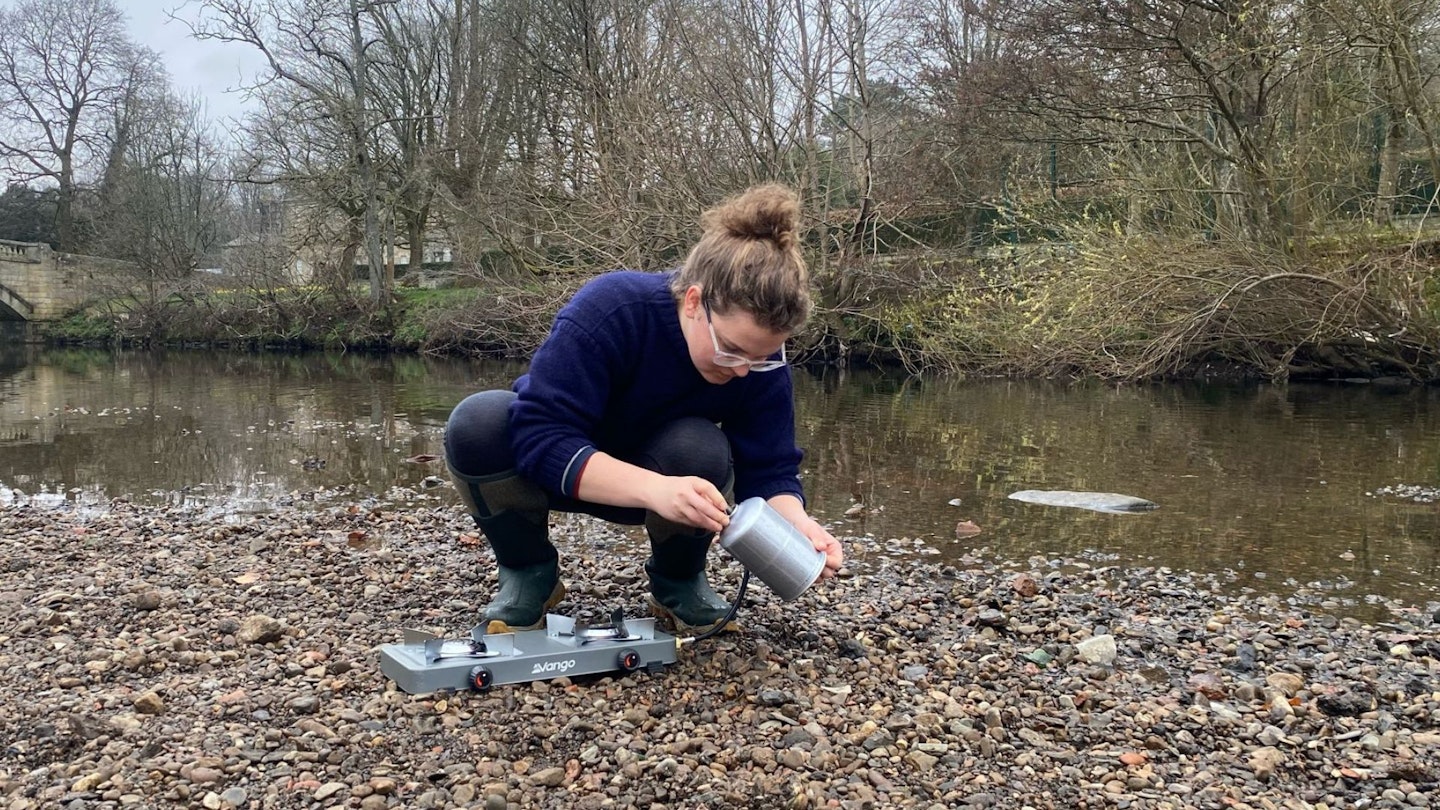
Camping stoves should feel well-built. We avoid the very cheapest ones which you’ll often find in petrol stations for around £10-15, because they go through those low-pressure gas canisters so quickly you might as well throw money into the sea (and you’ll still end up with a half-cooked dinner). They’re also dangerous, as people forget to flip over the cooking grate to provide airflow, and end up with an explosion on their hands.
Instead, you should look for stoves which have good quality fuel connectors. Look for bronze screw components, or a tight-fitting rubber hose around the seal. Fittings should feel robust - knobs and dials should be well thought through (i.e. not come off if you accidentally turn them too far one way), and the hotplate or pan-rest should be firmly affixed to the ring. Nothing should feel jiggly or like it’ll fall apart on first use - because it probably will.
You’ll also want to familiarise yourself with the knob-system at home in the garden before you try and light it outdoors while hungry for the first time. Trust us on that one.
Fuel type
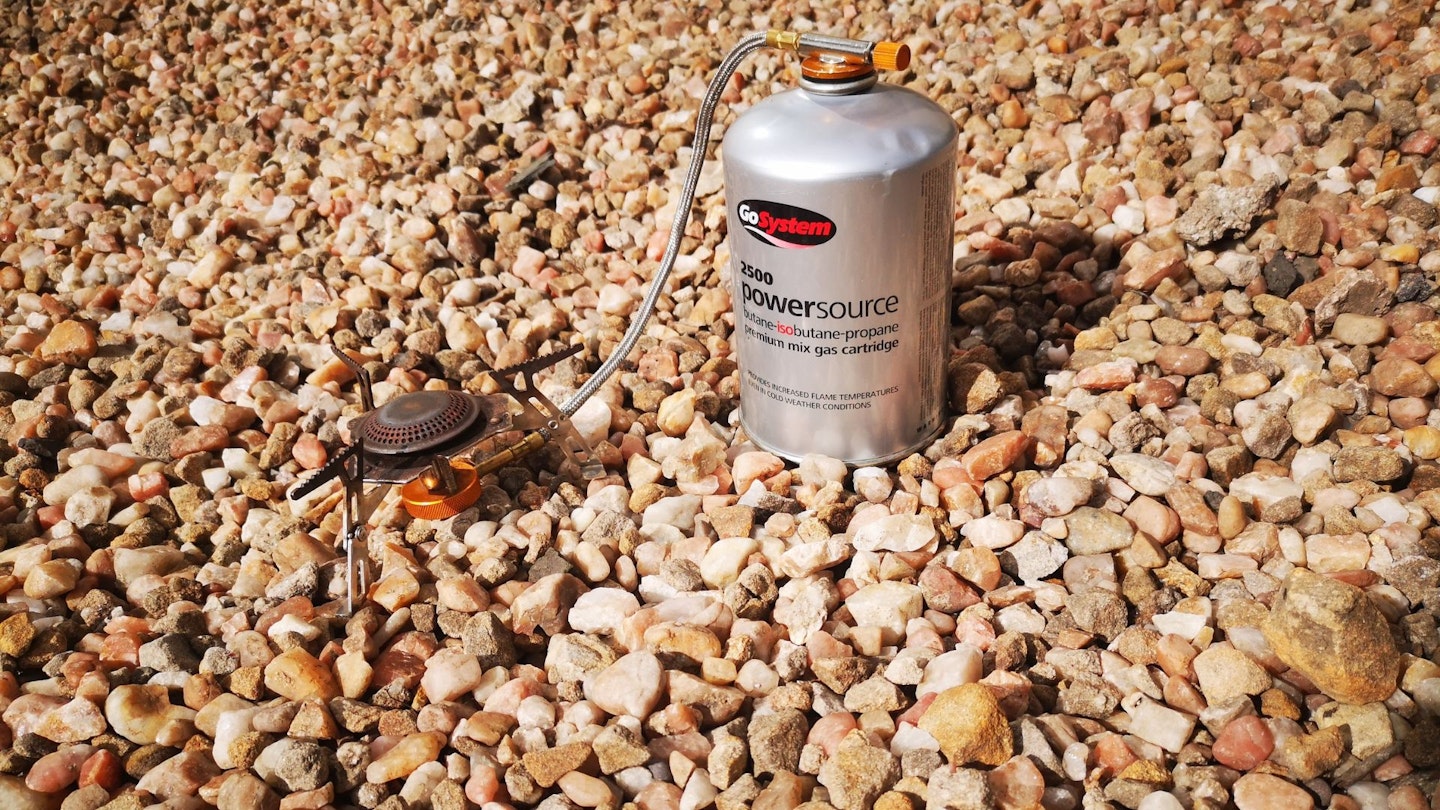
The biggie. The monster. The lynchpin of your camping stove experience: which fuel type to invest in. Fuel types are a huge “it depends” question, but in short, the vast majority of camping stoves will either run on butane, propane, or a mix of the two.
Some do use wood, some still use petrol, and we’ve found a few modern electric induction ones for campervans - but usually gas is usually the most convenient, cheapest and easiest to transport. It might not be the safest (more on that later) but for the most part, you’ll be looking at something involving butane or propane. But that’s a whole new kettle of worms in itself - more on gas below.
Gas: butane or propane?

Butane and propane are both forms of LPG - liquid petroleum gas. Propane burns better at lower temperatures, but is more pressurised and often difficult to transport - you’ll see large, red pure propane bottles used outside for alpine huts, or as a fuel source for off-grid houses.
Butane is a much more common fuel for camping: anytime you see a blue bottle, that’s butane. Due to having a much higher boiling point than propane, it’s less pressurised, meaning it’s easier to transport and use without specialist regulators. It doesn’t burn quite as hot as propane and it doesn’t perform as well for colder trips, but for most people’s summer campsite experiences, butane will be the right choice.
However, some camping gas bottles - namely the smaller, more expensive ones you see for backpacking - have a mix of propane and butane, usually at 5% propane. This is to enable cooking at lower air temperatures plus give a slightly more efficient burn. If you’re looking for a family camping stove to use when it’s hovering around zero, try one which fits the EN417 standard.
Wood
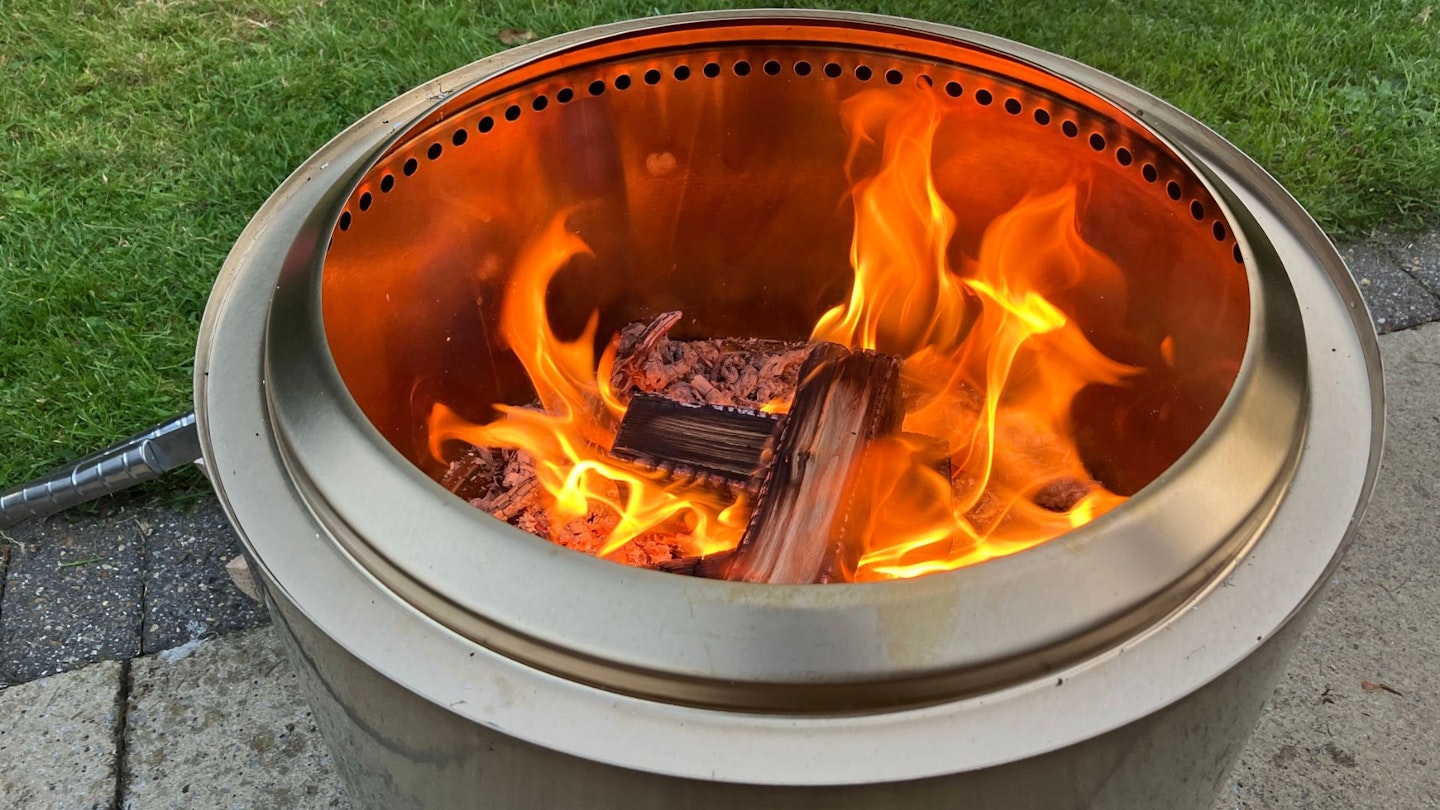
Wood is a rustic choice for a camping stove, coming with as many benefits as it does drawbacks. Modern portable wood burning camping stoves are designed to maximise efficiency and minimise smoke, and can do a surprisingly good job of controlling heat too, especially in comparison to an open fire.
A wood-fuelled campstove also imparts a lovely smoky flavour into certain foods - and there’s nothing nicer than sitting around a firepit with a beer as it burns low late into the evening. Other benefits of wood-powered camping stoves include being able to cook anywhere where there’s fallen wood or driftwood lying about: they’re great for beaches and rustic woodland romps.
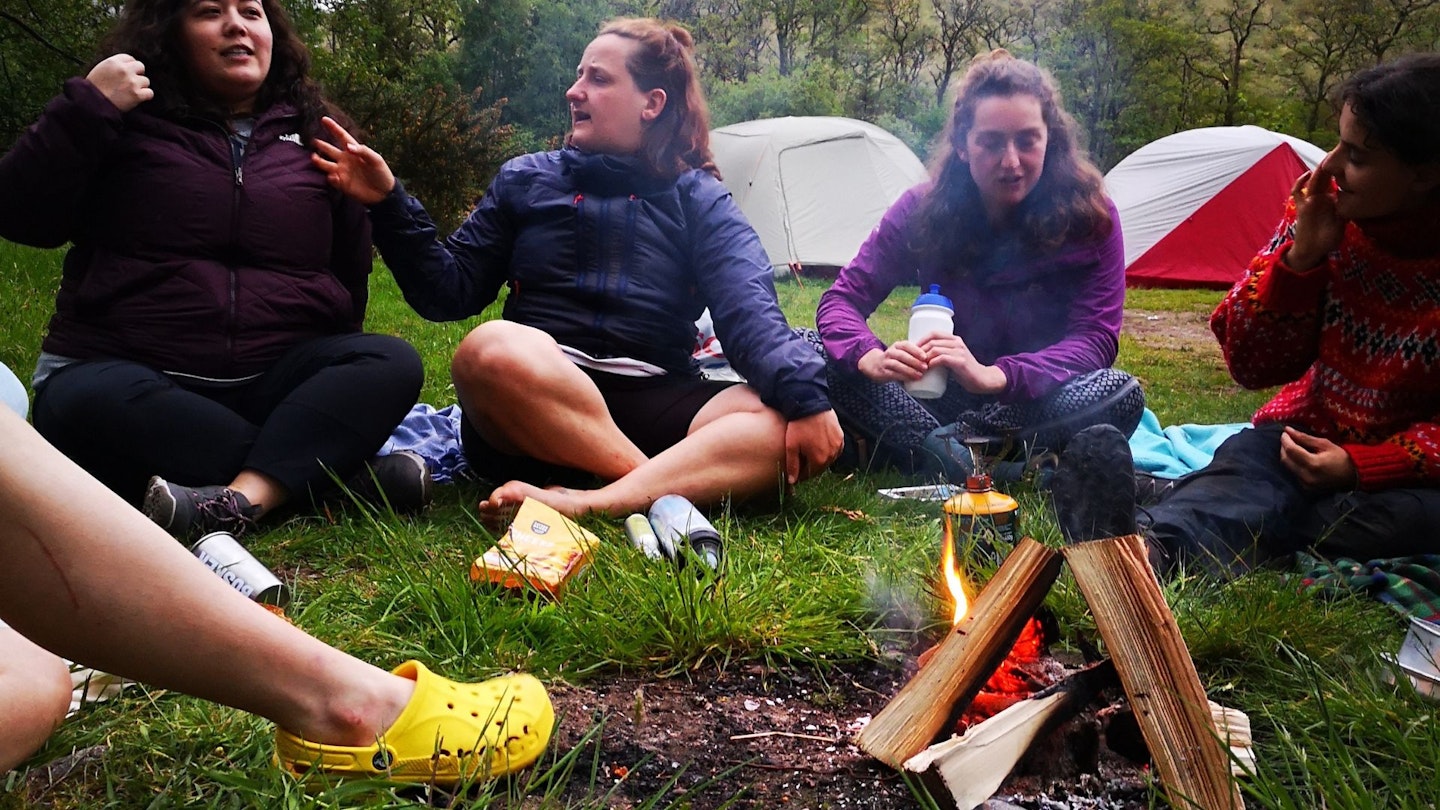
However, there are quite a few drawbacks to wood if you’re going to use it as your primary camping fuel. This includes the fact that your fuel needs to be bone dry for them to work initially - often a challenge if you’re foraging for your own wood in the UK.
Additionally, if you’re buying wood for your stove to cook on regularly, then your running costs might be higher than gas - not to mention that buying the woodfired stove outright will probably be more expensive than gas if you want something with decent heat control and a clean burn.
You’ll also be limited to one pot, which to handle the higher heat output of wood, should probably be cast iron - heavy and bulky in comparison to collapsible or lightweight camping pots which are more compatible with gas.
If you are set on getting a wood stove, double check that the campsite you’re taking it to will allow it. Many campsites won’t allow any burning unless in a designated fire pit - so definitely learn before you burn.
Electric camping stoves
If you’re a campervanner with a large battery, and/or have a caravan with an electric hookup, don’t overlook the power of an induction stove. Safe, easy to use, easy to clean and brilliantly powerful, induction beats gas any day for cooking in an enclosed space.
Obviously the disadvantage here is that you need a reliable electricity source, and that electric stoves often use more kilowatts than something like a lamp or a phone charger.
Petrol
Is there anything scarier than the first few moments of lighting a petrol stove? We think not. They’re fiddly, can flare up easily, and seem to have just one setting: hotter than the inside of the sun. You might be wondering what the advantage of a petrol stove is at all, but in certain scenarios, there are some.
Firstly, petrol is a universal fuel. If you’re travelling across the remotest parts of Africa or outer Mongolia, you'll be able to find petrol for your stove, unlike other fuel sources. It also burns at a low temperature, and it burns efficiently at high altitude too. It’s also one of the cheapest ways of cooking, with around a quid’s worth of fuel lasting roughly 8 hours or so.
Petrol stoves are no more difficult to transport than gas, just requiring a fuel canister and the stove itself - for double burner petrol stoves this is actually sometimes more portable than a bulky bottle of butane. Petrol stoves also last forever - and we mean, forever. They’re usually built as ruggedly as possible so end up being pretty bombproof, as long as they don’t turn into a bomb themselves.
However, petrol stoves are really quite unnecessary for the majority of camping trips in Europe. They’re often smelly, can be messy to refill and don’t have the best control for cooking food in comparison to gas or induction. You’re also more likely to spill fuel near an open flame, which any Zoolander fan will tell you is a bad idea. Oh - if you smoke, don’t buy a petrol stove.
Is a regulator and hose included?
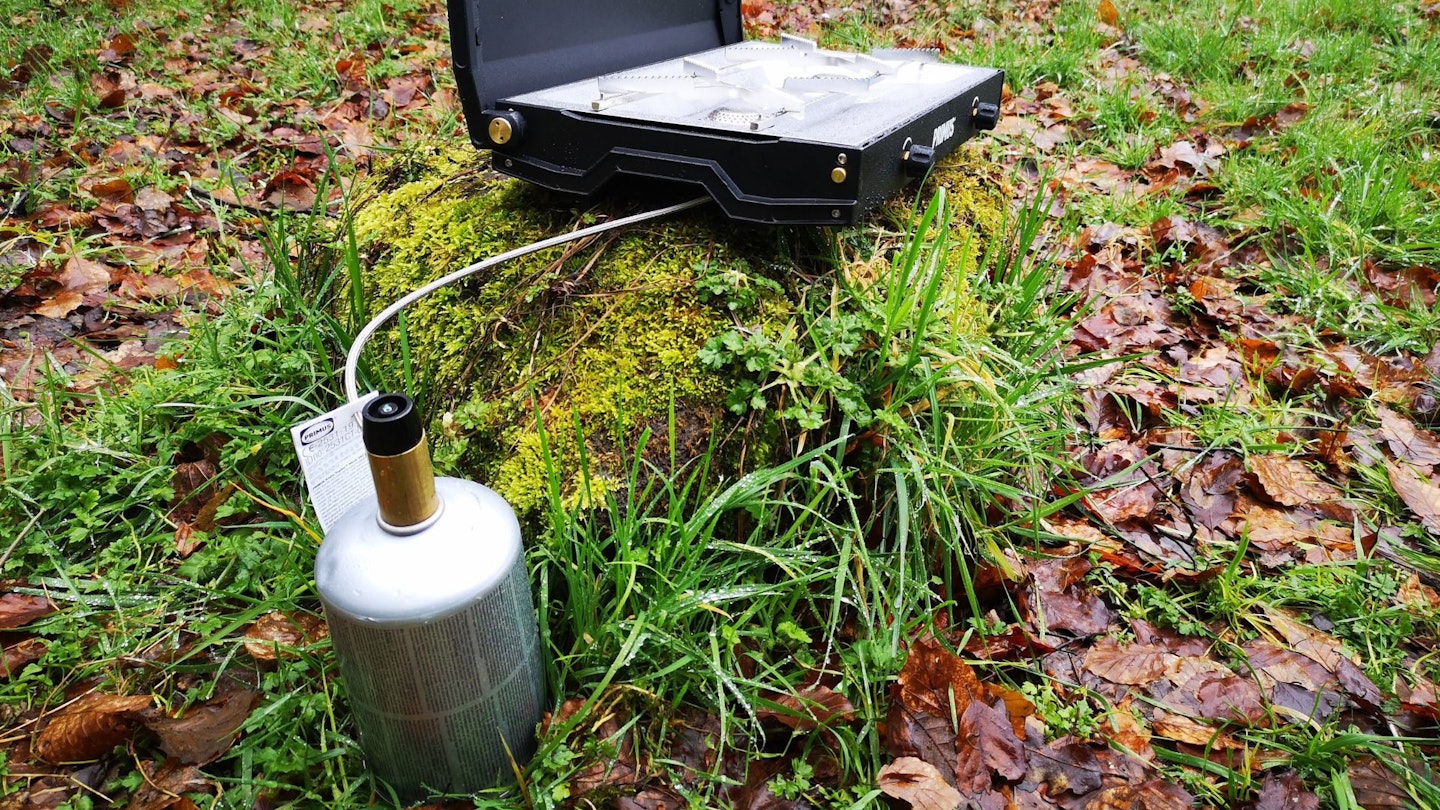
If you’re buying a large camping gas bottle for a double burner stove, then you may have to purchase the hose and regulator separately; these can be bought online easily enough once you’ve figured out the fitting on your gas bottle.
Regulators (and gauges) tend only to be used with larger gas bottles; for smaller backpacking stoves or other canisters, you won’t need one. The above image shows the built-in regulator from the Primus Kinja stove.
Watts (power)

One often-overlooked aspect of buying a camping stove is the amount of heat output you want for cooking. Most camping stove rings operate between 1500-2000 watts, which is typically lower than your average indoor kitchen ring, but still does a good job of cooking food without absolutely rinsing through your fuel supply.
If the stove you’re buying doesn’t state its power output, then beware, as it might be lower than expected and take longer for food to cook, or water to boil. Typically gas pressure and ring size will influence your power output. Power output is very readily stated on induction stoves, which typically are higher and have more control.
Where do you put a camping stove?
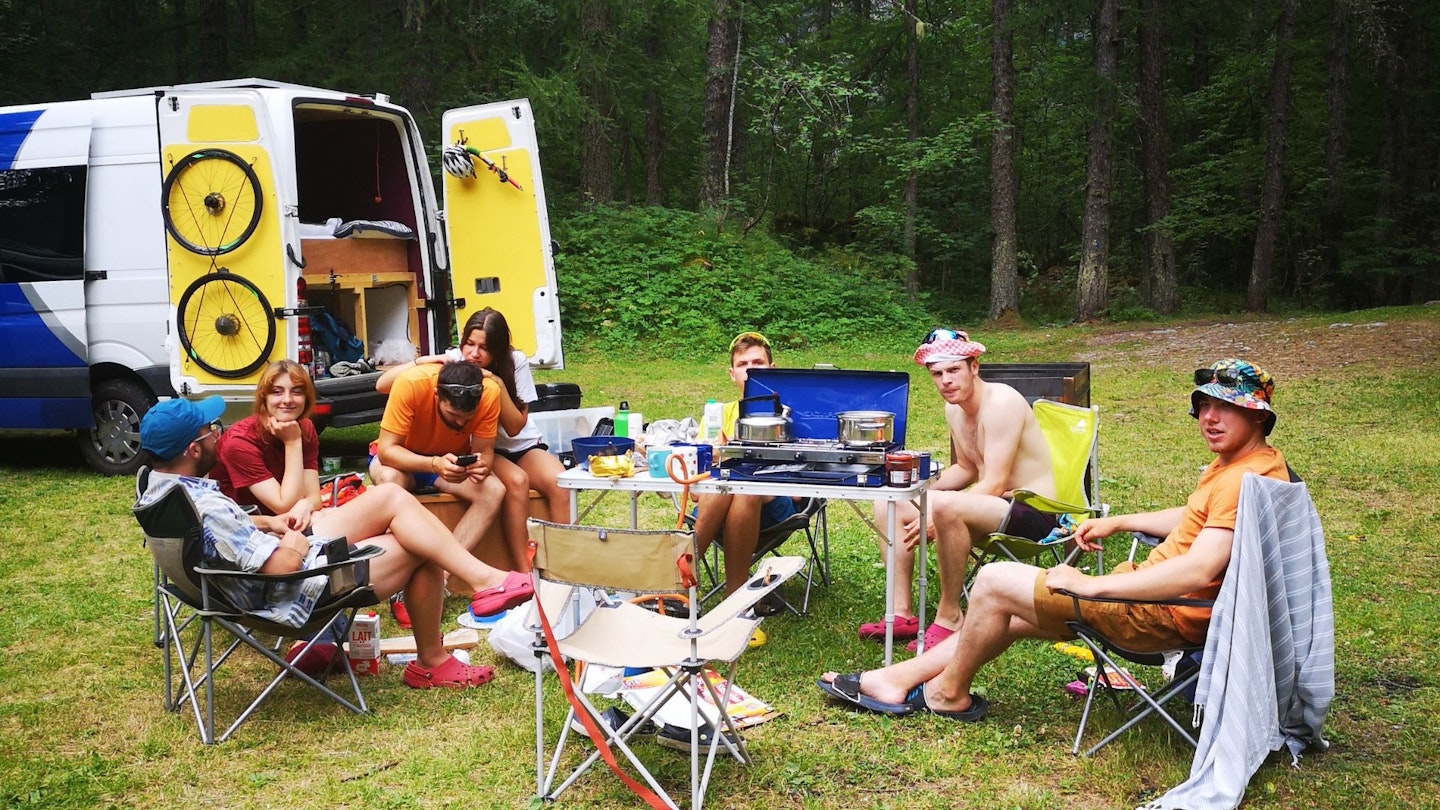
The best place for most traditional camping stoves is outside (induction hotplates notwithstanding). Gas and petrol stoves do well on a sturdy table, but wood-fired stoves are always best on the ground, at least 5m from your tent, or anything else remotely flammable.
If you’re using butane or propane, setting up shop in a well-ventilated family tent lobby, with plenty of space around the stove and table is fine. When it comes to backpacking stoves in smaller tents, you can cook in the porch with the door open if it’s really torrential, but for both fire safety and particulate management, outside is still best.

When it comes to any other fuel source, especially solid fuels like wood, charcoal and hexane, it’s vital that the whole setup must be outside to prevent carbon monoxide buildup, which can be deadly.
Additionally, the gas bottle should be in a safe, flat, coolish place with no obstructions. Always make sure to switch the gas off at the source after you’re done cooking, rather than just using the dial on the stove itself. It’s much, much less likely to leak that way.
Is it safe to sleep in a tent with a stove?
We’d always choose to have the stove disconnected from the fuel source before storing it in a tent. When it's disconnected, you do what you like with it. You rascal.
Can I use a camping stove in a park?
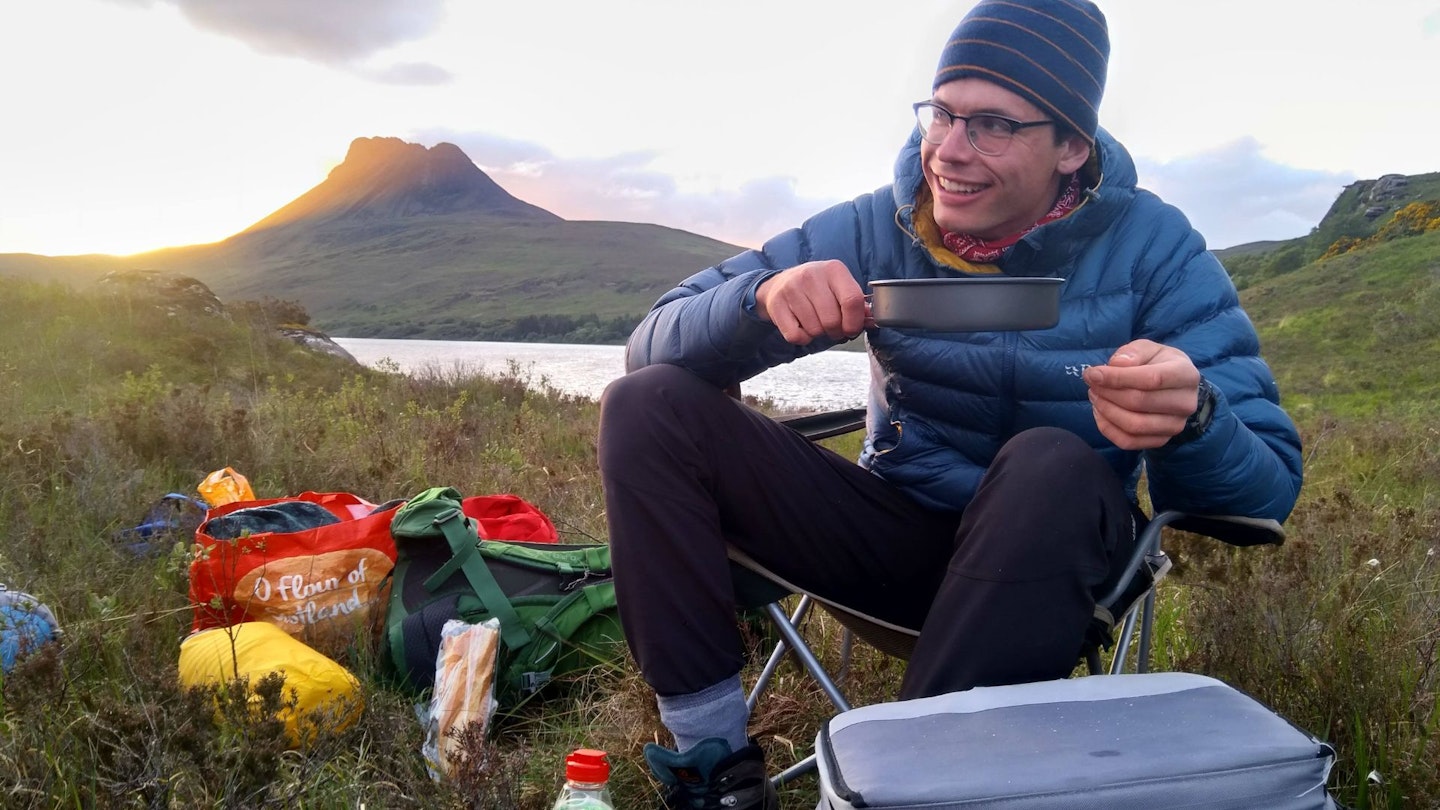
Listen, you can use a gas camping stove for personal use just about anywhere you like, unless it’s otherwise stated on a sign or with a bylaw. There is no one to stop you having a brew or a nice bacon butty in the park, as long as you’re not being a public nuisance or trying to do anything with commercial intent.
Wood burning stoves or barbecues are a different issue - many parks and beaches won’t allow any sort of open flame for safety reasons, so pay attention to the rules if you want to cook with solid fuels.
Are butane camping stoves safe?
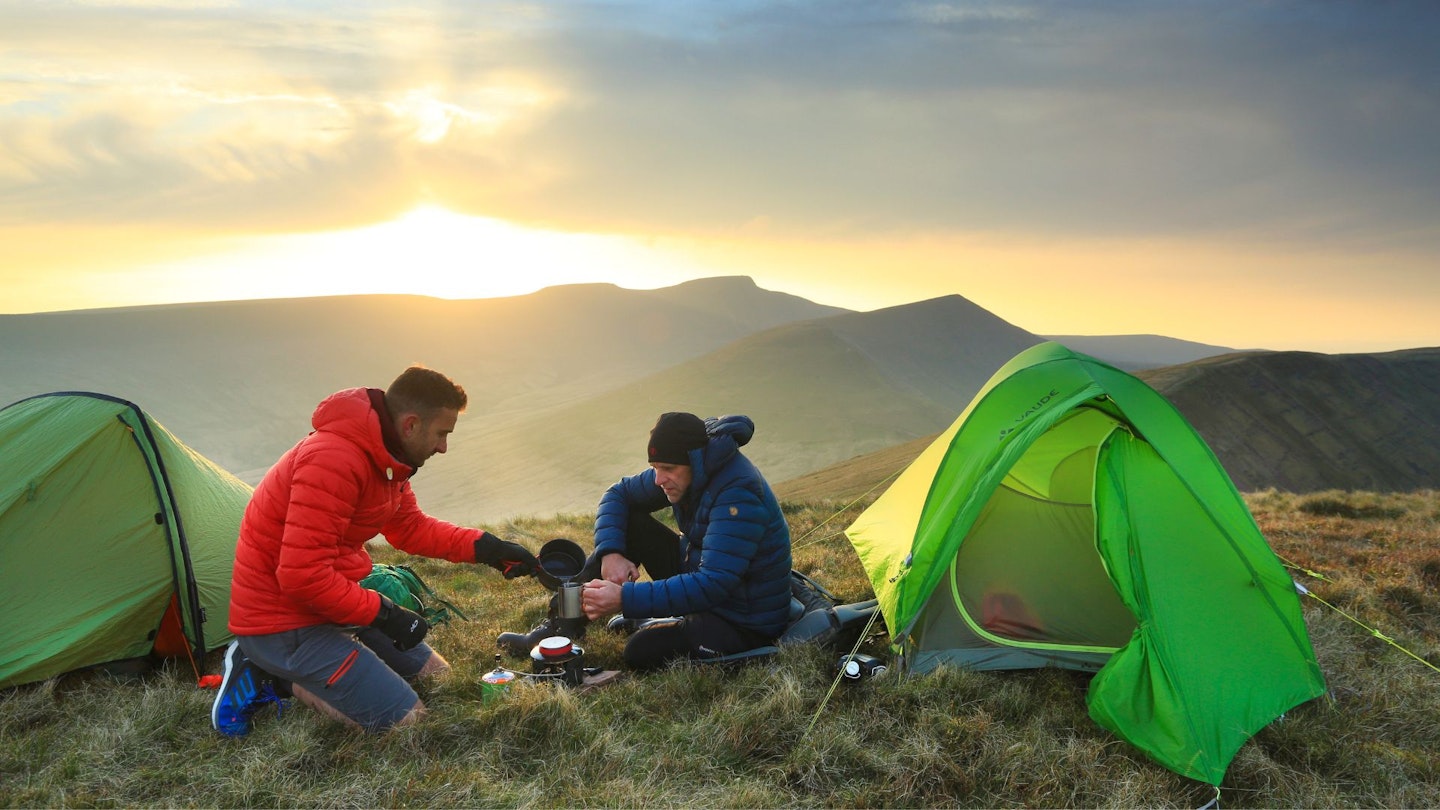
Yes, most butane camping stoves are completely safe, tested for leaks and efficiency before even leaving the factory. Most accidents come from user error. To maximise their safety, use them outside or in well ventilated areas, keep them away from anything remotely flammable or plastic, turn the gas off at the source when you’re done cooking, and always clean everything thoroughly to avoid a buildup of fat catching on fire.
About the author
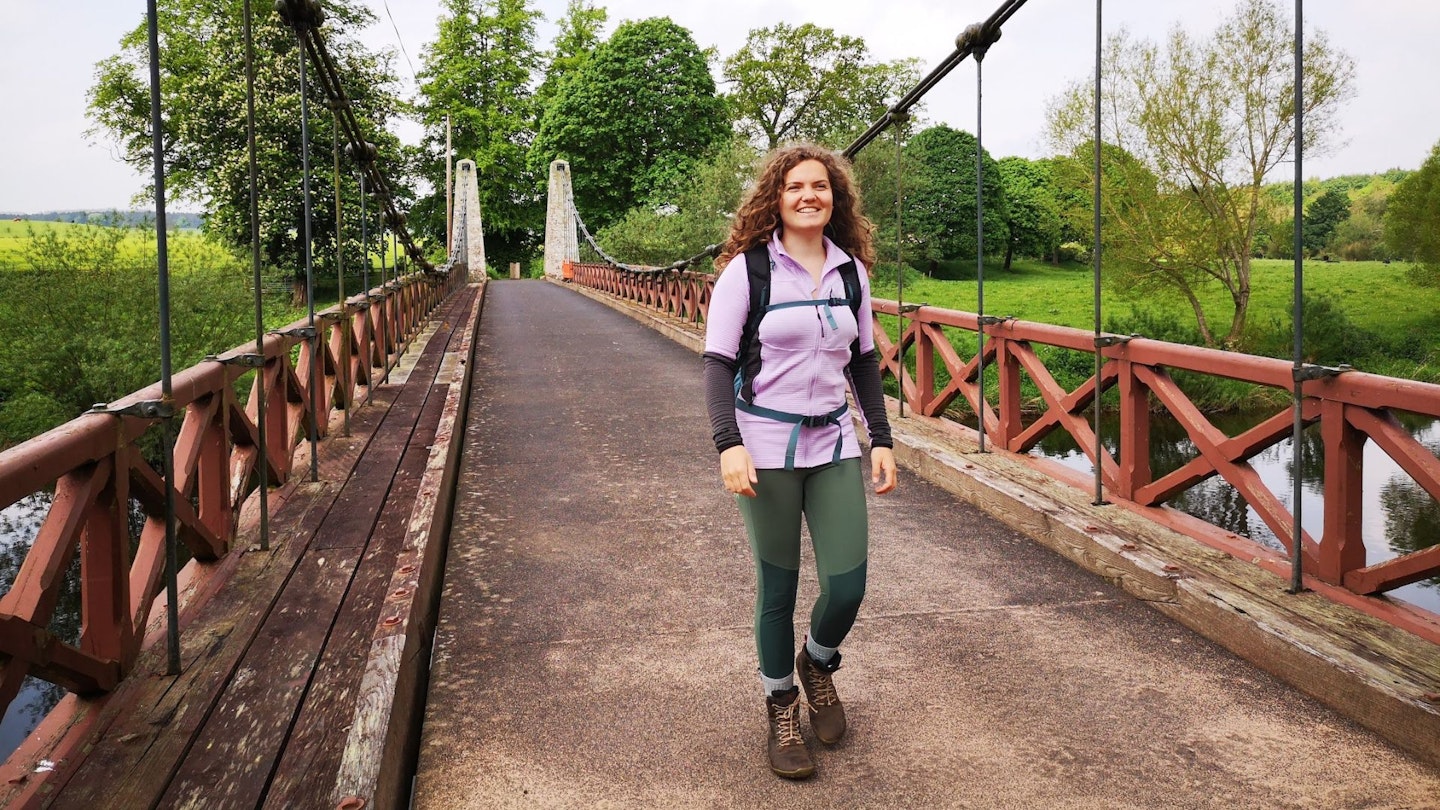
Fliss Freeborn is a writer for LFTO who likes nothing more than a good romp about outside, followed by a night inside a cosy tent. She's also a double Fortnum & Mason award winning cookery writer, so, you can trust her when it comes to outdoor cookware.

